Fertigation is the application of soluble fertilizers with irrigation water.
With "top" irrigation by sprinkling, when water falls on the leaves and other above-ground parts of the plant, small doses of fertilizers dissolved in water can play a role foliar feeding, in addition to participating in soil nutrition of plants. However, the ingress of water into the inter-row spacing during flood irrigation, which dramatically stimulates the growth of weeds, is a factor due to which top-irrigation fertigation is used quite rarely (which cannot be said about foliar top dressing by spraying, which is becoming more common and accepted).
Watering the soil with various solutions and infusions of organic fertilizers, practiced in small private farms, can also be attributed to fertigation. However, in professional plant growing only modern fully soluble mineral fertilizers on a chelate basis are used, with the addition, if necessary, of traditional well-soluble nitrates - potassium, ammonium and sodium. With the help of relatively inexpensive saltpeter, it is possible to satisfy the needs of plants for nitrogen and potassium, but to provide phosphorus nutrition, more expensive fertilizers are needed - monopotassium phosphate, pecacid, complex chelate fertilizers with an increased dose of phosphorus. Superphosphate, ammophoska and other traditional fertilizers containing phosphorus are not suitable for fertigation, being not completely soluble.
Fertigation has received well-deserved recognition with drip irrigation, which allows you to apply fertilizer pointwise. They try to keep the concentration of fertilizers in the system during irrigation at a level not higher than 1 g / l. The fertilizer solution (mother solution) is prepared in a separate tank, from where it is dosed into the main line. The most common and cheapest device for fertigation is a Venturi injector connected in parallel to the main line and suction fertilizer solution due to the pressure difference created by blocking the main line between the inlet and outlet of the injector. Working with an injector requires a certain skill and has some peculiarities - for example, suction is affected by the difference in height between the mortar unit and the area being watered, i.e. when water is supplied up the slope, suction becomes more difficult. On the whole venturi injector is a reliable device, tested for decades.
A more expensive, but easier to manage, solution is to connect a fertilizer pump to the line, which will pump the fertilizer solution at a pressure higher than the pressure in the line.
Over time, even the most fertile land is depleted. What to do in this situation? Of course use artificial fertilization. This application of fertilizers is called fertigation, i.e. fertilizers are supplied to the plant along with watering. This method was invented back in the 70s of the last century.
How to carry out fertigation
Fertilizers can be applied intermittently or continuously. But the most beneficial is the regular application of fertilizers with a low concentration of about 3-15 kg/ha. There are several methods and types of equipment for dosing fertilizers into irrigation water.
Fertigation Equipment
- fertilizer container,
- Venturi type injector (Venturi dispenser),
- dosing pump (dosatron)
Fertilizer tank
This is a hermetically sealed tank with a solution of fertilizers, which has taps at the inlet and outlet. This container is designed for simplified application mineral fertilizers and other chemicals through a drip irrigation system. The fertilizer head tap creates a small pressure drop and parallel flow through a tank where water is mixed with fertilizer and fed into the drip irrigation system.
In terms of simplicity, the fertilizer tank is the most reliable and least capricious device in operation. But it has disadvantages: uneven concentration of the fertilizer solution. The solution first has a high concentration, then the concentration gradually decreases.
Venturi injector
This is a tube with special tapered constrictions at the ends. The Venturi injector works on the differential pressure principle. The flow of water passing through the venturi injector creates a vacuum that sucks the fertilizer solution into the main channel, where it mixes with irrigation water and goes further through the drip irrigation system.
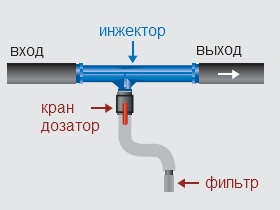
Option to turn on the Venturi injector
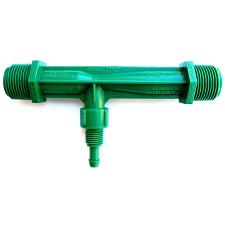
Venturi injector usually made from special polymeric materials resistant to fertilizers. In professional systems, the venturi injector is installed in the drip irrigation system on the so-called fertilizer head, which allows you to separate the irrigation and fertigation processes. The venturi injector has a strictly defined flow direction, this is usually indicated by an arrow.
The "Venturi" injector gives a good uniformity of mixing the fertilizer solution with the main water flow and maintains a given concentration throughout the entire time of application of the solution.
Dosing pump (dosatron)
It is a hydraulic metering device that is used to proportionally apply fertilizers and other chemicals through a drip irrigation system. It guarantees high accuracy of fertilizer dosing.
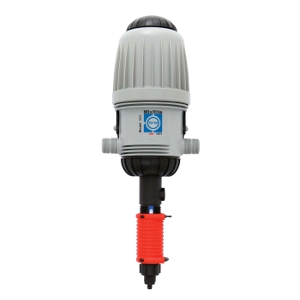
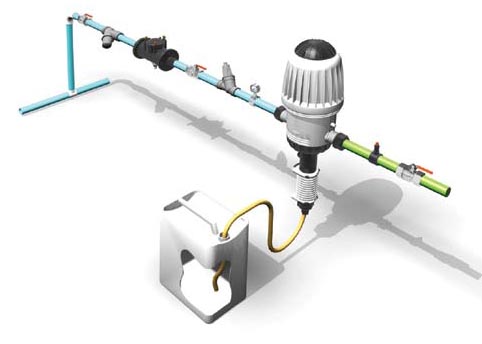
Dosatron can be mounted directly into the irrigation system or through the fertilizer head. The working turbine inside the dosatron is driven only by the water pressure in the system, as a result of which the device sucks a well-defined amount of solution from the fertilizer tank, then a homogeneous mixture is formed in the mixing chamber with water, which is fed into the irrigation system. The dosatron is adjusted once. It does not require further control.
Which ones to use fertilizers for fertigation
For fertigation, only water-soluble mineral fertilizers can be used, for example: Terraflex, Novalon, Kemira combi, Kristalon, Fegtisage, Universol, MadMix, potassium monophosphate, ammonium and potassium nitrate, urea and others.
Rare cannot be used. complex fertilizers- this is fraught with complete clogging of the irrigation system. Also, do not use fertilizers that are slightly soluble in water, like nitroammophoska.
Before using an unfamiliar fertilizer, make a solution out of it and test it on samples of the drip irrigation line, as even an unpredictable reaction is possible when mixing fertilizer with water.
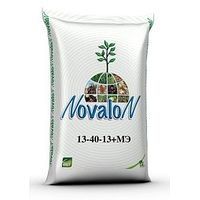
How and how much to fertilize
Fertigation is recommended to start 20 minutes after the start of irrigation, when the water flow and pressure in the drip irrigation line stabilizes. The duration of fertigation is usually at least 30 minutes, followed by mandatory rinsing with clean irrigation water for at least 30 minutes.
As experts advise, the total amount of fertilizer should not exceed 1-1.2 kg of fertilizer per 1000 liters of water. Fertilizer application rates and their ratio with water are most often an individual value. It depends on the soil and climatic conditions in the place of cultivation, the phase of plant development, the type of plants, the technology of their cultivation and on the scale Agriculture developed by specialists for each site individually.
On the scale of an individual farm, of course, most often it is not possible to attract a fertigation specialist, so you will have to select the concentrations and types of fertilizers either on your own or use the experience of other gardeners. But it is certainly better to build on your research from general recommendations for agriculture and common sense. And of course, extreme care must be taken when working with fertilizer concentrates.
There are more than 700 pages in the List of fertilizers and agrochemicals allowed on the territory of the Russian Federation, not all fertilizers are suitable for you for a number of reasons, therefore we have made a selection for you for drip and macro irrigation (Fertigation), where the ideal price-quality ratio, ease of use-content of macro- elements:
| (C), Liquid nitrogen fertilizer (KAS) Brand KAS-30; Brand KAS-32 | JSC "KuibyshevAzot" | 0369-06-201-090-0-0-0-0 | 31.12.2015 |
| (С), Liquid nitrogen fertilizer (KAS) grade KAS-32 | OAO Nevinnomyssky Azot | 0654-07-201-205-0-0-0-0 | 19.03.2017 |
| (C), Nitrophoska Solub brand 15-10-15-2 | Compo GmbH & Co. KG | 0381-06-204-122-0-0-0-0 | 31.12.2015 |
| (L), Water Soluble Fertilizers Mark A 17:17:17 (Mortar); Mark B 17:8:22 (Stout Man); Mark B 8:20:25 (Springhole); Mark D 12:6:29 (Baby) | Fasco+ LLC | 0459-06-201-080-0-0-0-1 | 29.11.2016 |
| (C), Complex water-soluble mineral fertilizers Novalon brand: Novalon 03+07+37+2MgO, Novalon 13+40+13, Novalon 15+5+30+2MgO, Novalon 19+19+19+2MgO | LLC "Terra Don" | 1763-10-204-381-0-0-0-0 | 10.02.2020 |
| (LS), Monoammonium phosphate special water-soluble brand: A, B | JSC “Voskresensk Mineral Fertilizers” | 2391-12-202-037-0-0-0-1 | 05.08.2022 |
| (LS), COMPO water-soluble fertilizer brand: Bazaplant 8-12-24, Bazaplant 15-10-15, Bazaplant 15-5-30, Nitrophoska foliar 20-19-19, Nitrofoska foliar 15-30-15, Nitrofoska foliar 7- 12-40, Nitrophoska foliar 25-10-17, Novatek solyub 21, Novatek solyub 14-48-0, Novatek solyub 16-10-17, Novatek solyub 20-5-10, Novatek solyub 14-8-30, Nutrimix 8 (S15), Nutribor 6 (S9), Bazakot Plus 16-8-12, Bazakot Plus 11-9-19, Floranid Turf 20-5-8, Floranid Permanent 16-7-15, Floranid NK 14-0-19, Floranid Master extra 19-5-10, Floranid Eagle NK 20-0-18, Bazatop Sport 20-5-10, Bazatop Starter 19-25-5, Fertilizer sticks 13-6-10, For conifers 10-5-20, For lawn 15-5-8 | COMPO GmbH & Co. KG | 1853-10-204-122-0-0-0-1 | 05.04.2020 |
| (C), Potassium saltpeter technical grade CX | OAO United Chemical Company URALCHEM | 2417-12-201-033-0-0-0-0 | 26.09.2022 |
| (L, S), Potassium saltpeter technical grade CX | JSC "Akron" | 211-10-122-1 | 26.08.2023 |
| (LS) Water-soluble fertilizer NPK with trace elements Novofert brand: NPK 20-20-20+1MgO+ME, NPK 18-18-18+3MgO+ME, NPK 13-40-13+1MgO+ME, NPK 15-9 -28+2MgO+ME, NPK 3.5-18-33.5+0.5V+ME | Novofert LLC | 2074-10-204-428-0-0-0-1 | 10.11.2020 |
Calcinite™
Special calcium nitrate is produced according to a special technology of the YARA company, which has no analogues in the world. It is recommended to use in drip irrigation systems (fertigation), which allows to extend the life of drip irrigation systems, it is also used for foliar foliar feeding of plants. The fertilizer is granulated, has 90% of granules 2-4 mm in size.
Agrochemical features Kaltsinita™ is a chemically pure fertilizer that meets all environmental standards of the EU countries; fully water-soluble fertilizer (table 5); stimulates the development of the root system, improves the formation of cell membranes and plant walls; improves the processes of photosynthesis, transportation of hydrocarbons and the assimilation of nitrogen by plants; increases the resistance of plants to stress, fungal, bacterial and physiological diseases resulting from calcium deficiency, for example, blossom end rot of tomatoes; global-katalog.ru physiologically alkaline fertilizer, must be dissolved in a separate container before use in drip irrigation systems.
The use of Calcinite™ promotes the absorption of calcium, magnesium, potassium, ammonium and other cations from the soil due to the nitrate nitrogen compounds that are part of the fertilizer. Calcinite™ is also used for foliar applications in 0.5-2.0% concentration (by physical weight), is highly effective under adverse weather conditions that do not contribute to the normal absorption of calcium cations and lead to calcium deficiency in plants.
Monopotassium phosphate
phosphorus-potassium concentrated water-soluble fertilizer, it is recommended to use in drip irrigation systems, in hydroponics systems and for foliar feeding of vegetable, fruit, ornamental crops, vineyards on all types of soils or substrates.
Many forms of fertilizers, in addition to the nutrients our plants need, contain a lot of things that interfere with the development of plants and lead to problems, the harm from which may be greater than the expected benefits of top dressing. Take for example potassium chloride (a popular fertilizer with a potassium content of 50 to 60%). After applying high doses of such a fertilizer, plants actively assimilate the potassium contained in it, releasing chloride ions that are toxic to the roots, which, accumulating in the soil, pose a threat to the formation of the crop, the more the higher the application doses were.
Sometimes farmers naively choose potash salt (since chlorine does not sound in its name), but this is an even bigger mistake, since potash salt is a mixture of potassium chloride and sodium chloride (cooking salt, in common parlance) and in this case, the accumulation of toxic ions and the development of salinization processes will go even faster. A similar problem is typical for many fertilizers from the group of so-called "simple salts", including the popular nitrophoska and potassium magnesia and superphosphate.
This can often be tolerated when growing field crops - with a low yield bar and with traditions of applying such fertilizers for plowing (mixing them with three thousand tons of arable soil per hectare), but this practice often becomes fatal in intensive vegetable growing. Ballast-free water-soluble fertilizers are available for irrigated vegetables. This group, for example, includes brand fertilizers.
We have been successfully working with this product for three years already and have repeatedly seen in practice the responsiveness of vegetable crops to the correct strategy in mineral nutrition.
Solubility problem. Plants absorb nutrients from the soil in the form of ions. That is, only dissolved in the soil solution. And therefore, the solubility of a fertilizer is directly related to its digestibility for plants. This is important in mineral nutrition in general, but especially important in drip irrigation where we use fertigation (fertilization with irrigation water).
From the practice of application - when preparing the mother liquor directly in the field (without heating water), it is easy to achieve a concentration of 0.1 kg / liter. Moreover, this is a true solution, and not a suspension, as in the case of attempts to make solutions from superphosphate and ammophos. Suspensions clog droppers, which causes huge crop losses, and the solution not only does not clog them, but due to its acidity even cleans droppers from deposited salts.
Fertigation - fertilizing with drip irrigation
For productive cultivation of plants, of course, they must be watered on time and correctly. And this task is best of course handled by drip irrigation. But over time, even the most fertile land is depleted. What to do in this situation? Of course use artificial fertilization. This application of fertilizers is called fertigation, i.e. fertilizers are supplied to the plant along with watering. This method was invented back in the 70s of the last century.
How to carry out fertigation
Fertilizers can be applied intermittently or continuously. But the most beneficial is the regular application of fertilizers with a low concentration of about 3-15 kg/ha. There are several methods and types of equipment for dosing fertilizers into irrigation water.
Fertigation equipment:
- fertilizer container;
- Venturi-type injector (Venturi dispenser);
- dosing pump (dosatron).
Fertilizer tank is a hermetically sealed tank with fertilizer solution, which has taps at the inlet and outlet. This container is designed for simplified application of mineral fertilizers and other chemicals through a drip irrigation system. The fertilizer head tap creates a small pressure drop and parallel flow through a tank where water is mixed with fertilizer and fed into the drip irrigation system.
In terms of simplicity, the fertilizer tank is the most reliable and least capricious device in operation. But it has disadvantages: uneven concentration of the fertilizer solution. The solution first has a high concentration, then the concentration gradually decreases.
The Venturi injector is a tube with special tapered constrictions at the ends. The Venturi injector works on the differential pressure principle. The flow of water passing through the venturi injector creates a vacuum that sucks the fertilizer solution into the main channel, where it mixes with irrigation water and goes further through the drip irrigation system.
Venturi injector and the simplest diagram of its connection
The venturi injector is usually made from special polymeric materials that are resistant to fertilizers. In professional systems, the venturi injector is installed in the drip irrigation system on the so-called fertilizer head, which allows you to separate the irrigation and fertigation processes. The venturi injector has a strictly defined flow direction, this is usually indicated by an arrow. The "Venturi" injector gives a good uniformity of mixing the fertilizer solution with the main water flow and maintains a given concentration throughout the entire time of application of the solution.
A metering pump (dosatron) is a hydraulic metering device that is used to proportionally apply fertilizers and other chemicals through a drip irrigation system. It guarantees high accuracy of fertilizer dosing.
Dosing pump and its connection diagram
The dosatron can be mounted directly into the irrigation system or through the fertilizer head. The working turbine inside the dosatron is driven only by the water pressure in the system, as a result of which the device sucks a well-defined amount of solution from the fertilizer tank, then a homogeneous mixture is formed in the mixing chamber with water, which is fed into the irrigation system. The dosatron is adjusted once. It does not require further control.
What fertilizers to use for fertigation
For fertigation, only water-soluble mineral fertilizers can be used, for example: Terraflex, Novalon, Kemira combi, Kristalon, Fegtisage, Universol, MadMix, potassium monophosphate, ammonium and potassium nitrate, urea and others. Do not use rare complex fertilizers - this is fraught with complete clogging of the irrigation system. Also, do not use fertilizers that are slightly soluble in water, like nitroammophoska.
Before using an unfamiliar fertilizer, make a solution out of it and test it on samples of the drip irrigation line, as even an unpredictable reaction is possible when mixing fertilizer with water.
How and how much to fertilize
Fertigation is recommended to start 20 minutes after the start of irrigation, when the water flow and pressure in the drip irrigation line stabilizes. The duration of fertigation is usually at least 30 minutes, followed by mandatory rinsing with clean irrigation water for at least 30 minutes.
As experts advise, the total amount of fertilizer should not exceed 1-1.2 kg of fertilizer per 1000 liters of water. Fertilizer application rates and their ratio with water are most often an individual value. It depends on the soil and climatic conditions at the place of cultivation, the phase of plant development, the type of plants, the technology of their cultivation, and on an agricultural scale is developed by specialists for each site individually.
On the scale of an individual farm, of course, most often it is not possible to attract a fertigation specialist, so you will have to select the concentrations and types of fertilizers either on your own or use the experience of other gardeners. But it is certainly better to build on your research from general recommendations for agriculture and common sense. And of course, extreme care must be taken when working with fertilizer concentrates.
Mironov A.P.- Candidate of Agricultural Sciences Sci., Head of the project "Garden" of the group of companies "Dorf", Krasnodar
Khoroshkin A.B.- Candidate of Agricultural Sciences Sci., Leading Specialist of the AgroMaster Group of Companies, Timashevsk
Efficiency of using the drip irrigation system and foliar application in apple orchards, in the Kuban horticulture zone
In 2006-2007 the effectiveness of the use of fertigation in apple plantations and the effectiveness of new special fertilizers for fertigation and foliar dressing in apple orchards of the Kuban zone were determined.
In 2006, experience was laid in gardens with drip irrigation of the Vyselkovskoye enterprise, CJSC of the Agrocomplex company. The purpose of the experiment is to determine the effectiveness of new special fertilizers for fertigation and foliar dressings from the Valagro company (Italy) - "Active"(agrochemical to accelerate the absorption of nutrients by the root system), "Viva"(agrochemical for increasing the biological activity of the plant and soil in the zone of the root system), "Master"(fertigator - complex NPK + (Mg) + micro for use in drip irrigation systems and for foliar application), "Plantafol"(leaf fertilizer NPK+micro), Brexil(special chelated form of meso and trace elements for foliar application), Boroplus (organic compound boron for foliar application), "Kalbit S"(special calcium chelate for foliar applications).
Intensive apple orchard with drip irrigation
The experiment was carried out on a plot of the garden: block No. 79, apple tree, rootstock M - 9, planting pattern 5m x 2m, planting in 1998, on drip irrigation. Varieties: Idared, Golden Delicious, Elstar, Interprice.
Experience Scheme
The plot with the above varieties was divided into two parts (control and experimental plot). Both in the control and in the experimental plot, irrigation and the feeding system through drip irrigation were the same. On the experimental site, along with traditional fertilizers, special agrochemicals for drip irrigation were applied: Activewave and Viva. "Viva" - was applied twice during the growing season with a dosage of 10 l / ha in the "Rosebud" phase and at the end of fruit growth. Activewave was applied twice, with a dosage of 10 l/ha, in the phase after the formation of the ovary and at the beginning of the growth of the fetus.
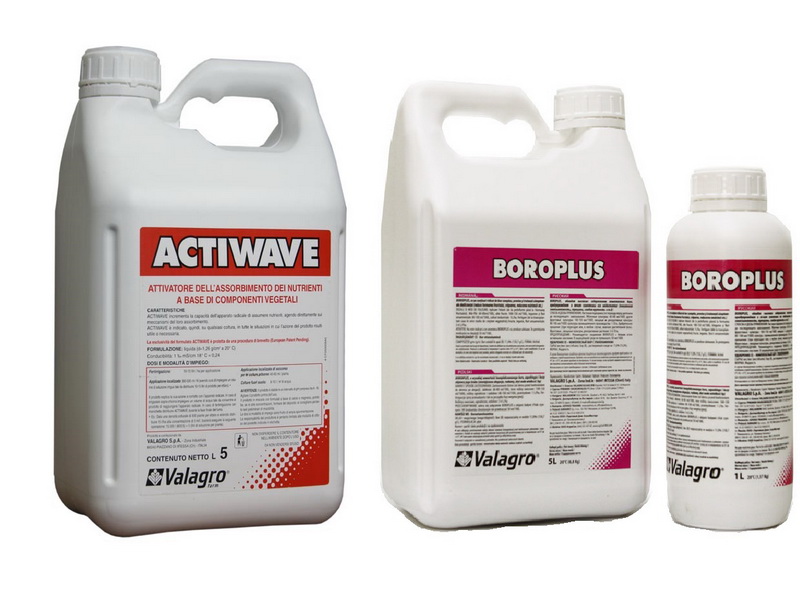 Fertilizers "Activeve" and "Boroplyus"
Fertilizers "Activeve" and "Boroplyus"
Fertilizers for drip irrigation
During the growing season, the following fertilizers were used to organize mineral nutrition with irrigation water: Master 13-40-13 + micro, Potassium nitrate (N-13%, K2O-46%), Calcium nitrate (N-15%, CaO- 26%), Magnesium nitrate (N-11%, MgO-16%), Ammonium nitrate (N-34%).
Fertilizer dosages during the season varied depending on the vegetation phase, weather and climatic conditions and were adjusted according to the results of leaf diagnostics.
During the irrigation season, orthophosphoric acid was used twice to flush the drip system.
Scheme of foliar feeding
Foliar application was carried out together with plant protection products in the same tank mix, the only exception was Kalbit S, which was applied separately. According to this scheme, the experimental plot was processed.
Despite the difficult weather conditions in 2006 (in mid-January the temperature dropped below minus 30º C), a positive result was obtained:
Table 1
Experimental results
The high result on the experimental plot is due to an increase in the ability of the root system to assimilate nutrients with the help of agrochemicals "Viva" And "Active", as well as optimizing nutrition through foliar feeding. The difference in yield increase from 3 to 13 t/ha is due to the response of the variety to the stressful conditions of 2006 and the ability to overcome the depressive state.
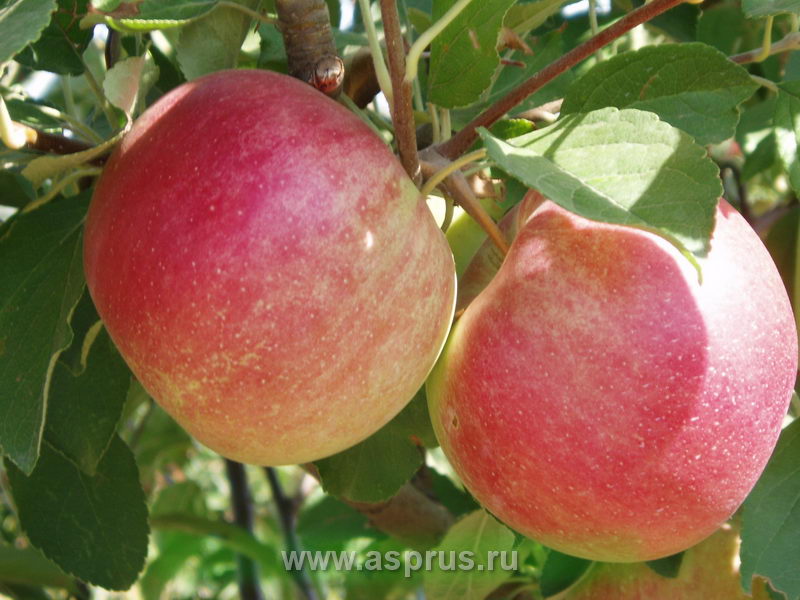 Apple variety Idared
Apple variety Idared
In 2007, a study was made on the use of fertilizers applied in a dissolved form using an orchard drip irrigation system to increase the yield of various apple varieties.
Relevance and purpose of research. The Kuban horticulture zone is a zone of insufficient moisture. For 1 year, about 550 - 600 mm of precipitation falls here. Precipitation falls unevenly, in summer there is no rain for 25-30 days, the soil in the zone of the row warms up to 50°C. Fruit trees are under water stress. To level the negative impact of weather conditions and droughts on the crop, the root system must receive water in a dosed and uniform manner.
To produce a high yield of quality fruits, apple trees consume a large amount of nutrients and water. To compensate for the removal of these elements and provide a balanced diet fruit trees, timely application of fertilizers dissolved in water to the root zone is necessary. This can only be achieved with the use of garden drip irrigation systems.
Purpose of research- determination of the effectiveness of the use of fertigation in apple plantations. (Fertigation is the supply of mineral nutrition and water through drip irrigation systems.)
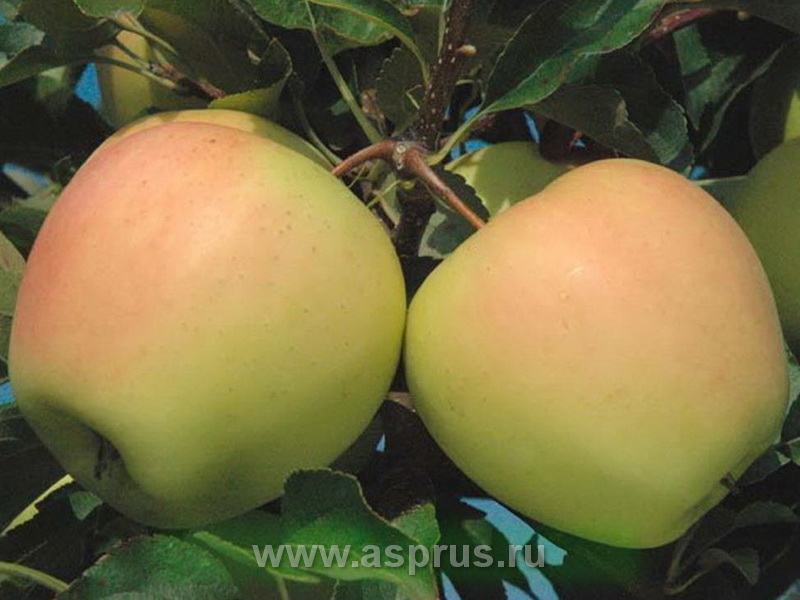 Apple variety Golden Delicious
Apple variety Golden Delicious
Research methods. The object of research were four varieties of apple trees of winter ripening. Idared, Golden Delicious, Renet Simirenko, Granny Smith. In each variant, 20 trees were taken into account and average indicators were determined. Rootstock M9, tree placement scheme 5 x 2 m, planting age 7 years. Inter-row tillage system - artificial grassing with periodic mowing; in the zone of the row - herbicide fallow.
Drip irrigation with the application of dissolved fertilizers was used on the experimental plot. On the control plot, under-crown irrigation without fertilizers. The system for protecting the garden from diseases and pests was used unified in the control and in the experimental variants. In autumn, after harvesting, an assessment was made of the yield and quality parameters of the fruits of the studied apple varieties.
Results and discussion. During the spring and summer, the same care work was carried out on the control and experimental plots, with the exception of the use of fertilizers. Yield results are shown in Table 2.
table 2
Yield of apple varieties, t/ha
All four varieties of apple trees showed an increase in yield from 5.5 t/ha to 8.7 t/ha.
![]() Apple cultivar Granny Smith
Apple cultivar Granny Smith
The following parameters could affect the yield increase: the length of annual increments, the number of fruits on the tree, the weight of one fruit, the diameter of the tree trunk and the size of the fruit.
Table 3
Biometric parameters of apple trees
As can be seen from Table 3, the length of annual growths and the diameter of the bole in all studied varieties are greater in the variant than in the control. And in general, the crown of trees on drip irrigation is more powerful, larger. The leaves have a more intense green color and are larger than those of the control trees.
Table 4
Qualitative and quantitative indicators of apple fruits
| Variety | Control | Option | Difference (+/-) | ||||||
| Weight of 1 fruit, g | Weight of 1 fruit, g | Number of fruits from 1 tree, pcs. | Number of fruits, with a diameter of more than 65 mm, pieces/(%) | Weight of 1 fruit, g | Number of fruits from 1 tree, pcs. | Number of fruits, with a diameter of more than 65 mm, pieces/(%) | |||
| Idared | 211 | 68 | 55(81%) | 248 | 89 | 82(92%) | +37 | +21 | +27(11%) |
| Golden Delicious | 182 | 90 | 69(76%) | 197 | 110 | 93(84%) | +15 | +20 | +24(8%) |
| Renet Simirenko | 148 | 73 | 46(63%) | 212 | 92 | 69(75%) | +64 | +19 | +23(12%) |
| granny smith | 190 | 71 | 53(75%) | 209 | 102 | 88(86%) | +19 | +31 | +35(11%) |
All indicators (Table 4) in the variant for the four studied apple varieties were higher than in the control.
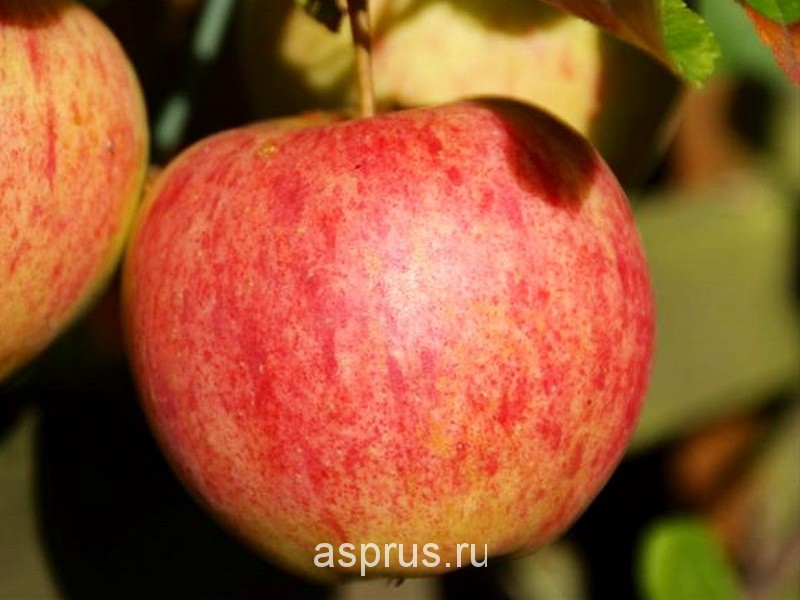 Apple variety Elstar
Apple variety Elstar
During the season, in the experimental variant, water-soluble fertilizers were applied through the drip irrigation system, according to soil, leaf diagnostics, and also based on the removal of nutrients with the crop. Fertilizers: ammonium nitrate, calcium nitrate, potassium nitrate, "Master 13-40-13", magnesium nitrate, "Hydromix"(concentrated complex of chelated trace elements), "Active". Orthophosphoric acid was used to flush droppers, once every 10 days. The cost of fertilizers per 1 hectare of the garden is 15,000 rubles.
Drip line parameters: diameter 16 mm, distance between droppers 2 m, outflow from one dropper 2.2 l/h, wall thickness 40 mils. Filter washing is automatic. Tensiometers are used to control soil moisture. The devices were installed at a depth of 0.3 m and 0.6 m. The moisture evaporation coefficient was determined using an evaporometer. These data are necessary to determine irrigation norms. The cost of acquiring and installing 1 hectare of a garden drip irrigation system amounted to approximately 60,000 rubles.
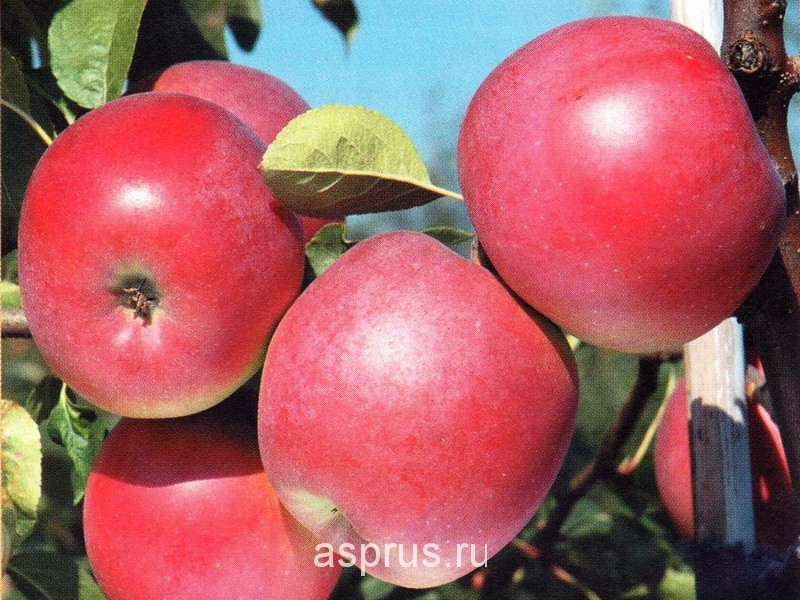 Apple variety Interprice
Apple variety Interprice
An integrated apple tree protection system against diseases and pests was used in the orchard. The cost of pesticides per 1 hectare of a fruitful apple orchard is 24,000 rubles.
Thus, per hectare of a garden with drip irrigation, the costs are higher due to the use of fertilizers and the cost of the drip irrigation system.
Annually, for 1 hectare of irrigated fruit-bearing garden, in comparison with 1 hectare of garden without drip irrigation, an additional 25,000 rubles are spent, including: 15,000 rubles. (fertilizers), 5,000 rubles. (depreciation of drip irrigation, based on a period of operation of at least 12 years), 5,000 rubles. (electricity, wages to the operator of the drip irrigation station).
The average selling price of 1 kg of winter-ripening apples was 16 rubles. The total cost per 1 hectare of a fruit-bearing orchard without drip irrigation amounted to 94,000 rubles. The total cost per 1 hectare of a fruit-bearing garden with a drip irrigation system amounted to 119,000 rubles.
The results on the economic efficiency of apple production for the studied varieties are shown in Table 5.
Table 5
Costs, revenues and profits per unit area of an apple orchard when using a drip irrigation system
The profit from the sale of apples per 1 ha for all varieties in the experimental variant is 1.4–2.4 times greater than the profit in the control (Table 5).
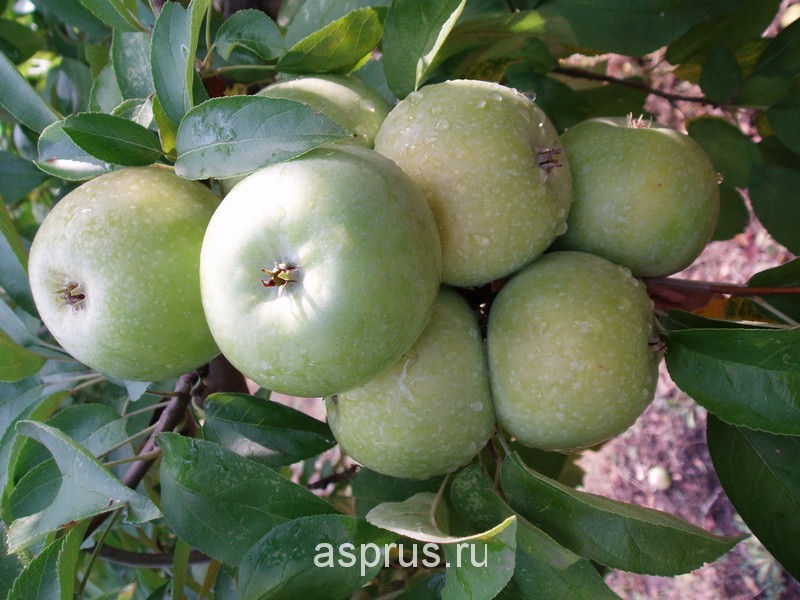 Apple variety Renet Simirenko
Apple variety Renet Simirenko
Table 6
The cost and profitability of apple production using a drip irrigation system
As can be seen from Table 6, in the garden plot with drip irrigation and fertigation, the cost of 1 kg of apples is lower for all varieties by 0.32 - 2.60 rubles. than in control. The level of profitability of apple production in the variant is higher by 15.3% - 78.2% than in the control.
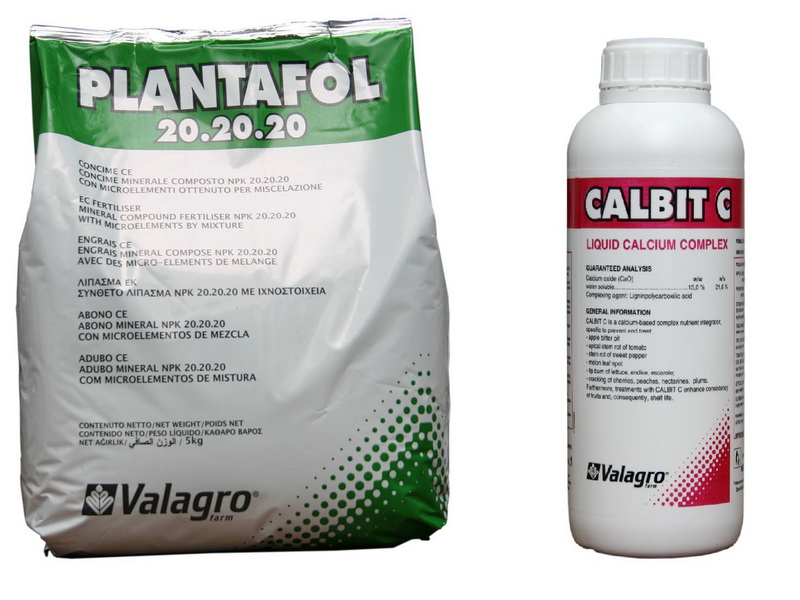 Fertilizers "Plantafol" and "Kalbit S"
Fertilizers "Plantafol" and "Kalbit S"
Conclusions. Applying fertilizer with a garden drip irrigation system is cost effective. The costs of purchasing, installing and maintaining a drip irrigation system for an apple orchard, as well as the use of fertilizers, pay off already in the first year of operation of the system due to a significant increase in yield. The quality of the fruits is higher, the fruits are more uniform, larger in size, the color of the fruits is more saturated.
Based on the foregoing, we can say: without drip irrigation of the garden and the organization of effective nutrition, it is impossible to talk not only about the annual high yields of fruits in general, but also about the life and harmonious development of fruit trees in particular.
Material prepared
company specialists "South Watering"
Drip irrigation of grapes in the southern regions of Russia
Usefulness of grapes for consumption in fresh and the presence of market demand, as well as ensuring food security, have influenced the increased attention to the development of table viticulture.
The south of Russia is the main producer of grapes in our country. Of all the areas of vineyards, most (more than 96%) is located within the Crimea, Kuban, Don, Stavropol, Dagestan, Chechnya, and only small areas are occupied by them in the Republics of North Ossetia Alania and Kabardino-Balkaria, as well as Astrakhan, Volgograd and Rostov regions . Table varieties of grapes occupy about 10% of the area. Despite the positive dynamics, the analysis of the table viticulture market in Russia indicates the need to increase production volumes, increase yields and increase the timing of sales. The largest areas are occupied by varieties: Vostorg, Avgustin, Moldova, as well as Nadezhda AZOS, Arcadia, Chocolate, Muscat Livadia, etc. High consumer demand for table grapes requires not only expanding production volumes, but also extending the period for the sale of domestic grapes.
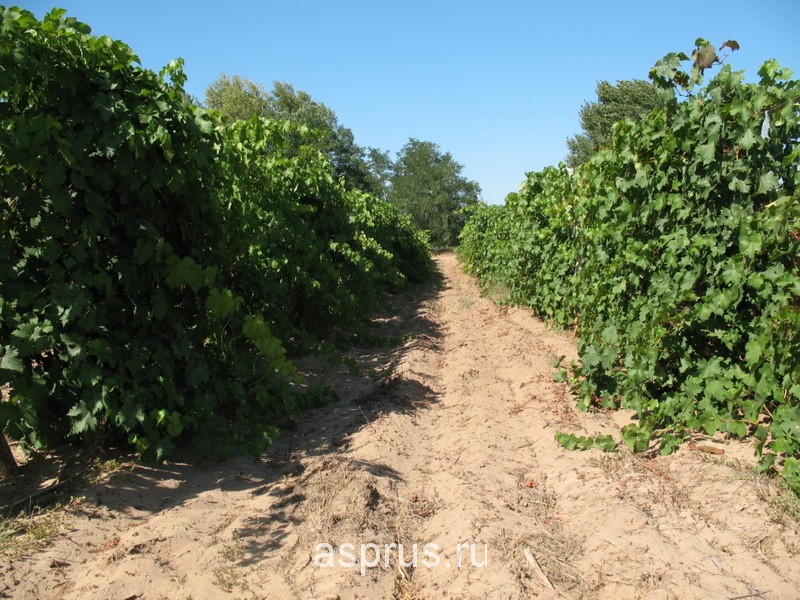 Intensive plantation of grapes in the southern zone of Russia
Intensive plantation of grapes in the southern zone of Russia
Current trends in the development of the viticulture industry, as well as consumer preferences, determine the following directions for the development of table viticulture in the regions:
- increase in the areas of vine plantations of table varieties from very early to late deadlines maturation, with an attractive appearance and high taste indicators;
- introduction of high-intensity technologies while maintaining the resource potential of the soil and the environment as a whole;
- creation of infrastructure for storage and sale of table grapes.
For the growth and high productivity of grapes, it is necessary 600-700 mm rainfall per year, subject to their favorable distribution by phases of development.
When harvesting grapes 15-20 t/ha total water consumption reaches 4800-5500 m3/ha. According to the degree of natural moisture supply, the viticulture regions of the South of Russia and the Crimea belong to the zone of insufficient moisture, therefore, it is only possible to grow such a grape harvest in the southern regions. with irrigation.
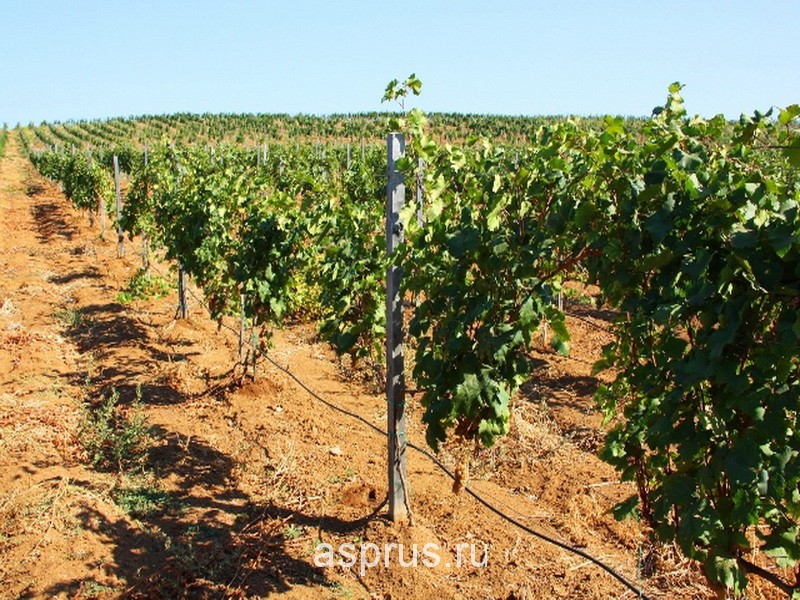 In drought conditions, when growing grapes, drip irrigation is necessary
In drought conditions, when growing grapes, drip irrigation is necessary
Grapes can withstand up to -180C, however, from the beginning of spring regrowth, even weak frosts almost completely damage young shoots.
Active growth of shoots begins from the time the average daily temperature reaches 100C.
The sum of active temperatures exceeding 100C, for early varieties is 900 degrees / days, for late-ripening - up to 2000 degrees / days.
Grapes can grow on shallow soils with a depth of 50-70 cm, up to 40% of which are calcareous materials. The optimal soil is medium in mechanical composition.
Grape plants are moderately sensitive to soil salinity. With EC (electrical conductivity) of the soil solution up to 1.5 mS/cm.
At EC 2.5mS/cm the drop in yield reaches 10%, at 4mS/cm it is 25%, at 6.7mS/cm it is 50%, and at a salinity of about 12mS/cm it is 100%.
Grapes grow at pH levels between 5.5 and 8.5.
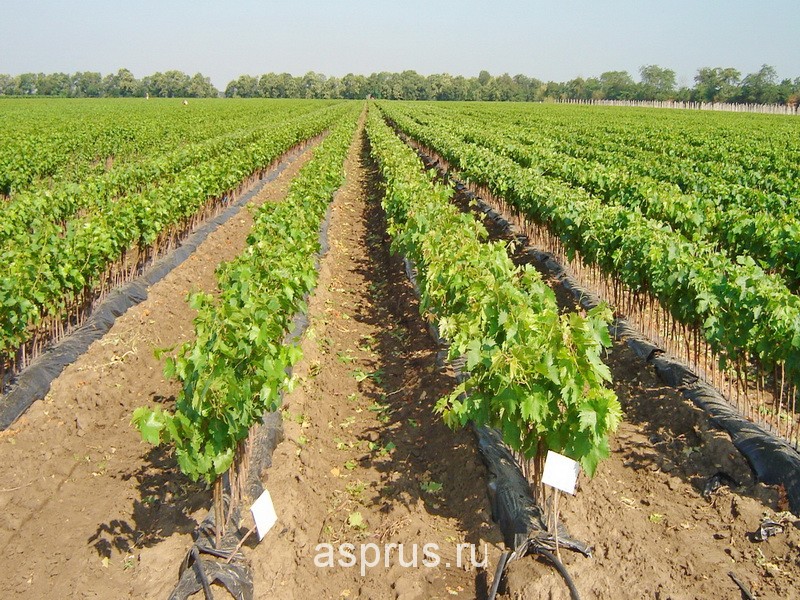 Growing grape seedlings in Italy
Growing grape seedlings in Italy
Water consumption grapes is not constant during the growing season and varies depending on the phase of plant development. Its maximum falls on the period of the greatest increase in biomass and gradually decreases towards the end of the growing season. In addition, it depends on the variety, soil, climatic conditions of the region.
Soil moisture at the level of 80-85% of the FPV should be maintained during the growth phases of shoots and berries and slightly reduced (up to 65-70% of the FPV) when the shoots mature. However, when the soil moisture is below this limit, the frost and winter hardiness of the grape bush decreases, which should not be allowed.
IN the first and second phases of the growing season(sap flow, bud break and shoot growth) the moisture requirement is very high. In case of its deficiency, there is a noticeable decrease in the number of inflorescences on the shoots. For good pollination and fertilization during flowering, a sufficiently high temperature and moderate humidity of the soil and air are necessary. Phase of growth and development of berries lasts from the end of flowering until the beginning of ripening berries. The greatest water consumption of grapes is observed in this phase and makes up about half of the total amount of water during the growing season. The success of intensive grape culture is largely determined by the moisture conditions during this period, so it is necessary to maintain soil moisture within optimal limits. At the beginning of the maturation phase shoot growth slows down, berries are formed. Irrigation of grapes during this period leads to an increase in yield. The sugar content increases sharply, and the acid content also sharply decreases. By the end of the ripening phase, the skin loses its elasticity and when moisture enters after rain or watering, the berries can crack, so the grapes are watered if necessary. If table grapes are intended for storage, watering is stopped.
The bulk of water (more than 99%) is consumed by the grape plant to optimize the conditions necessary for the passage of transpiration and respiration processes, and only 0.25% is used for the direct formation of organic matter.
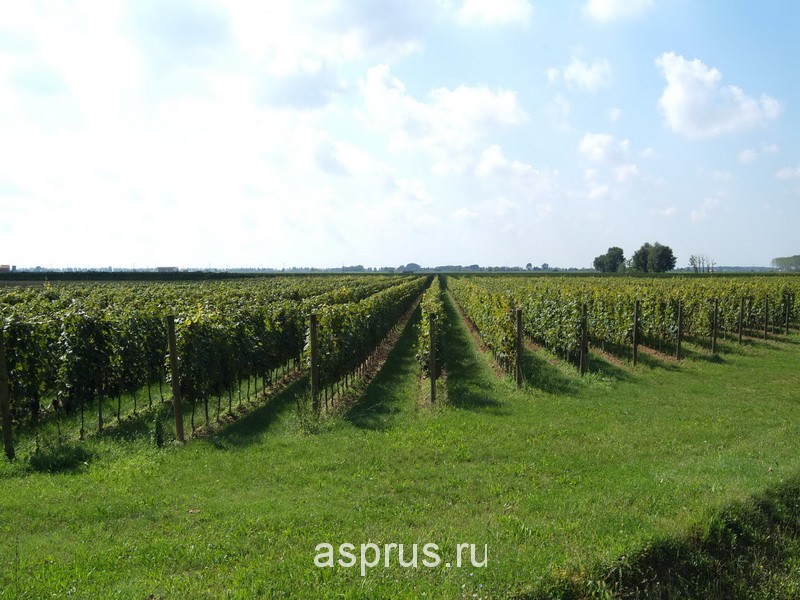 Compacted plantings of grapes on a trellis
Compacted plantings of grapes on a trellis
For the formation of 100 kg of yield, a grape plant needs: in the conditions of the Don and Kuban 20-30 m3, Crimea 29-44 m3 of water. In rainfed areas, due to the regulation of the work of the stomatal apparatus, the water consumption for transpiration is 8-9%. In the most contrasting growing conditions, such an important physiological indicator as leaf watering changes in grapes usually by 5-7%, maximum by 10-12%, while in most crops the degree of variation of this indicator is 35-40%. The above facts should be regarded as a high biological plasticity of a grape plant to extreme conditions water availability, but not as the ability to produce high yields under these conditions.
An important feature of irrigated vineyards is guaranteed yield stability. Irrigation has a positive effect on environmental factors, microclimate and phytoclimate, which ultimately leads to improved growth and development of vines and a significant increase in their productivity. Under the influence of irrigation, the air humidity in the zone of the bush increases by 6-16%, during critical periods the air temperature decreases, the hydromechanical properties of the soil improve significantly, as a result of which the efficiency of fertilizer application increases. Winter water recharge irrigation reduces the likelihood of soil freezing and increases the frost resistance of above-ground organs and roots. The amount of water consumption of a grape plant depends on the zone of cultivation of grapes (the amount of precipitation, their distribution by season, the amount of active temperatures, hydrothermal coefficient, air humidity, soil type and its physical and mechanical composition, depth of groundwater); biological characteristics of varieties (strong, medium and low-growing); the state of the grape plant (age, yield); cultivation technologies (planting scheme, soil content and methods of its processing); systems and methods of vineyard irrigation (moisture charging and vegetative irrigation).
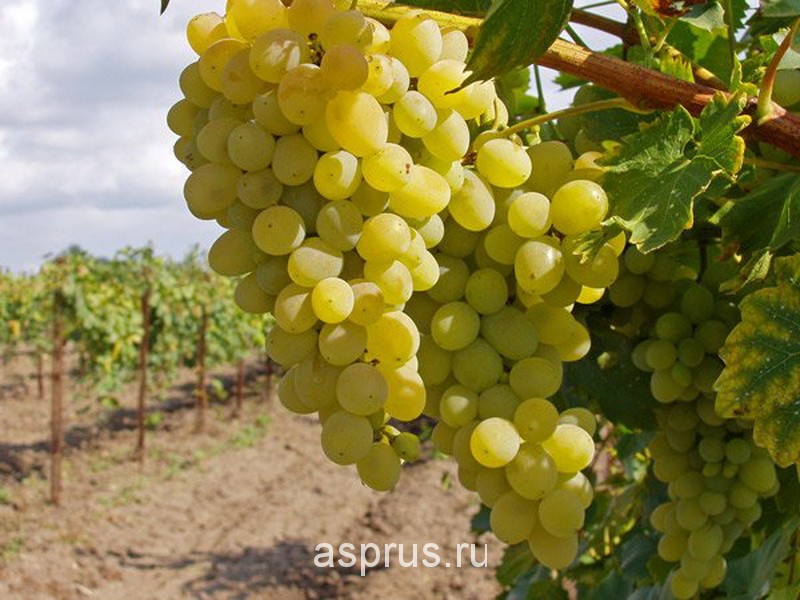 High-quality grape fruits are obtained subject to the elements of intensive cultivation technology, including irrigation and fertigation
High-quality grape fruits are obtained subject to the elements of intensive cultivation technology, including irrigation and fertigation
When developing schedules and rates of irrigation in irrigated crop conditions, it is necessary to take into account all of the above facts.
An important factor is soil aeration, as the roots of actively growing plants need air. Lack of air in the soil during the period of shoot growth current year can lead to the development of chlorosis on young leaves. During this period, not only the development of shoots takes place, but also the growth of roots, the laying of generative buds for the next year's harvest.
Sharp fluctuations in humidity during the ripening period of berries adversely affect the yield, since the distribution of water between the green mass of leaves and berries does not always go in favor of the berries. Increased soil moisture after harvest can cause secondary growth of side shoots.
Thus, in order to maximize the potential of the grape bush, it is necessary to provide the plants with sufficient moisture, especially during periods of maximum demand for it. Irrigation allows you to create optimal conditions moisture supply regardless of the conditions of the year and ensures high and stable yields.
One of the most progressive ways to provide grapes with moisture is drip irrigation, in which only the required layer of soil is moistened and water losses due to filtration are practically eliminated. Water is supplied to the root zone in small doses (1 - 3.6 l / hour for each bush). Drip irrigation is especially important for the Crimea if it is necessary to save irrigation water, and also that this method allows irrigation to be carried out in vineyards with rugged terrain. Drip irrigation of vineyards can reduce irrigation rates by 2.8-3.7 times and reduce the consumption of irrigation water per 1 ton of crop growth by 3.4-5 times compared to traditional irrigation methods. Water consumption in vineyards drip system irrigation in the southern regions reaches within 500 m3/ha and more per season. That is why the use drip irrigation systems grapes, in these conditions - saving irrigation water - allows you to fully unlock the potential of the region and increase the grape harvest by 1.5-2 times. It is necessary to carry out drip irrigation of vineyards from the year of planting seedlings. In this case, you can get a survival rate of 99%.
A feature of the use of drip irrigation is watering along the rows of plants, as a result of which an optimal moistening zone 1-1.5 m wide is created, depending on the type of soil, where the bulk of the roots are concentrated in a layer with a depth of 20-30 to 100 cm. The rest of the row spacing remains slightly moist, except during natural precipitation. Drip irrigation contributes to better aeration of the soil from the side of the row spacing. This makes it possible to provide a more favorable water-air regime for the life of the roots in a deeper layer of soil. This is important when growing grapes in deep clay and loamy soils. A certain horizon is created up to 1-1.5 m wide and up to 1 m deep with a large mass of roots, which ensures the rational use of water and fertilizers.
To obtain stable, high yields of good quality, along with irrigation, a high level of general agricultural technology is required. This guarantees a high intensification of vineyards and maximum profit per unit area used, which is the main goal of modern business.
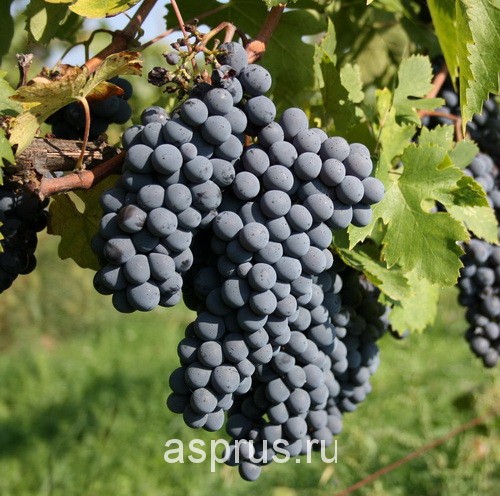 High quality grape fruit, variety Uva da Barolo
High quality grape fruit, variety Uva da Barolo
Supply of grape plants with nutrients depends on soil fertility, microbiological processes occurring in it, the balance of heat and moisture, cultivation technology. At the same time, it is important to take into account that a grape plant grows in one place for several decades and annually takes out a large amount of nutrients with the harvest. Fertilizers help to increase the drought resistance of plants and improve water exchange. Therefore, the approach to the development of a nutrition system on soils that are excessively and insufficiently moist during the period with extreme temperatures should be different. Absorption and distribution of nutrients in various bodies depends on the age of the plants. During the formation of bushes, the need for nitrogen fertilizers to build a vegetative mass is much greater than during the periods of fruiting and dying off of the bushes. With the rejuvenation of the bushes, the need for nitrogen also increases. The rates of absorption and content of nutrients in the organs of plants of various varieties in the annual cycle depend on the rhythm of biochemical and physiological processes, as well as on the timing of crop maturation. It has been established that the largest gross amount of nitrogen, phosphorus and potassium in the leaves of grape plants accumulates in the flowering phase, then their content gradually decreases, especially after harvesting and when the shoots mature. Differences in the absorption of nutrients are determined by numerous reasons, in particular, the productivity of leaves and shoots, the growth rate of the vegetative mass and economic yield, the nature of the development of the root system and the size of the crop. In small bushes in the Crimea and powerful ones in the Kuban, different levels of absorption and metabolism are observed. In this case, the degree of development of plants and the productivity of varieties play an important role. High-yielding bushes use fertilizers in large quantities and more rationally than low-yielding ones. At the same time, it is known that with the regular use of fertilizers, the productivity of the variety increases. Therefore, plant nutrition at different stages of ontogenesis should be differentiated.
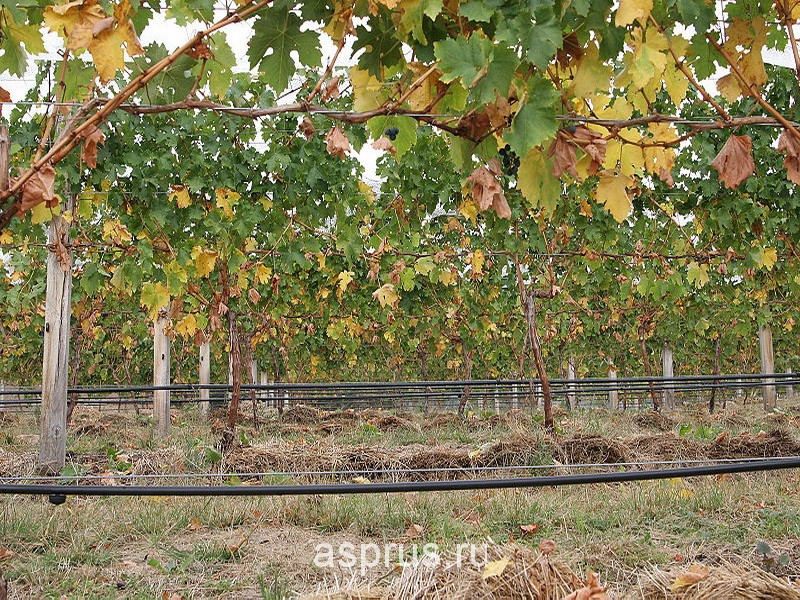 Installed vineyard drip irrigation system
Installed vineyard drip irrigation system
A balanced grape nutrition system regulates the processes of absorption and accumulation of nutrients, directly affects the size and quality of the crop. In fertilized areas, the roots of grape plants are located at a greater depth, their mass and length increase. The degree of absorption of nutrients, elements in plants increases. The productivity of photosynthesis, carbohydrate metabolism, the outflow of sugars, the amount of chlorophyll and starch in leaves and other organs increase. Water exchange improves, the amount of bound water increases, transpiration decreases, which contributes to an increase in drought resistance of plants. Mass is increasing vegetative parts, leaf surface, mass of clusters, the zone of inflorescence laying is expanding along the length of the shoots. As a result, the yield of plants on fertilized plantations increases by 10-50%.
Fertilization regulates the accumulation of various components in the berries. At the same time, it is important to take into account that there is selectivity in the absorption and accumulation of nutrients by plants of different varieties and rootstocks, which causes different product quality.
nitrogen fertilizers in optimal doses, affecting growth processes, they contribute to an increase in the mass of berries, clusters and yields without a negative effect on the quality of grapes. Unilateral nutrition of grape plants with organic and mineral nitrogen fertilizers enhances growth processes, more protein fractions accumulate in berries, but acidity and the amount of aromatic phenolic substances in the juice decrease, the harmonious combination of the main components is disturbed, which affects the quality of grapes and products from it.
Phosphate fertilizers have a positive effect on the quality of grapes: it accumulates more sugars and phosphorus compounds, accelerates the ripening of the crop.
potash fertilizers increase the resistance of berries to decay, accelerate their ripening, while increasing the sugar content and extractiveness of the juice, the amount of phenolic substances. When making potash fertilizers in double doses, the acids in the juice of the berries are neutralized.
calcium fertilizers increase the aromaticity, the intensity of the color of the berries, accelerate the rate of ripening of grapes and the accumulation of sugars.
trace elements contribute to the accumulation of sugars, aromatic and coloring substances in berries, accelerate enzymatic processes and ripening of the crop, improve its taste.
When using drip irrigation with fertigation and an automatic control system, accurate dosing of all fertilizers in solution is carried out, control of the amount of solution per unit of irrigation area.
 Fertigation allows you to easily manage plant nutrition, so that plants develop well and are less affected by diseases.
Fertigation allows you to easily manage plant nutrition, so that plants develop well and are less affected by diseases.
Fertigation allows:
- maintain the required level of concentration of nutrients in the soil on soils with low absorption capacity, poor in reserve nutrients;
- efficient use of fertilizers;
- prevent groundwater pollution;
- does not create conditions for secondary salinization of the soil.
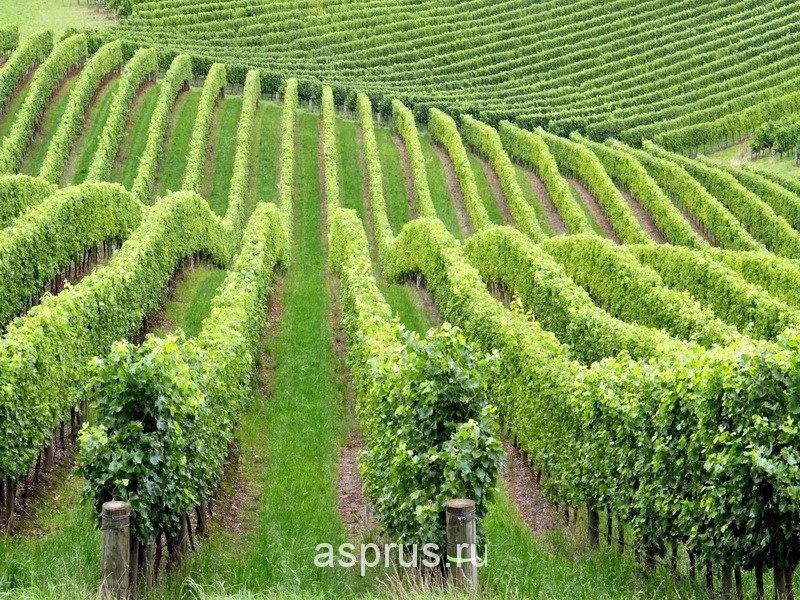 Intensive grape plantation in southern Italy
Intensive grape plantation in southern Italy
For fertigation, only completely soluble fertilizers are used, free from sodium and other harmful impurities.
The nutrition system of grape plants for the planned harvest is compiled taking into account the main introduction of nutrients, agrochemical analyzes of the soil solution, soil type. This should take into account:
- on sandy and sandy loamy soils, all fertilizers are best applied by fertigation;
- on medium mechanical composition (light and medium loamy) soils with a low level of nutrient content, the main application of fertilizers is combined with fertigation,
- with an average and high level supply with nutrients, only fertigation is used,
- on soils heavy in mechanical composition - various types of chernozems and heavy loamy podzolized soils - with a low and medium level of supply with nutrients, a combination of the main application of fertilizers with fertigation is used,
- at high rates, only fertigation is used.
To purchase a drip irrigation system, you need to contact a good company.
The YUG-POLIV company supplies high-quality equipment for watering all types of crops and has installed drip irrigation in such vineyards as: Bolshevik, Stavropol Territory, on an area of 40 hectares, watering table varieties, mother liquor and shkolki; "Fanagoria-Agro", Krasnodar Territory, 10 hectares of grapes, farm Gusev, Volgograd region, irrigation of technical grape varieties; "Girey-Tuz" Republic of Dagestan, 100 hectares of vineyards.
In all of the above farms, a drip irrigation system was installed, which consists of:
- Automatic multi-section gravel or automatic mesh vacuum filters of the Israeli manufacturer YAMIT. These filters provide a high degree of purification of water from any sources, their reliable design ensures uninterrupted operation of the entire system for many years (10 years or more).
- Compensated drip lines from Eurodrip or Metzerplas, which allow you to evenly moisten the root zone of vineyards, even in areas with difficult terrain. Drip lines can be located both on the surface of the earth and in the soil.
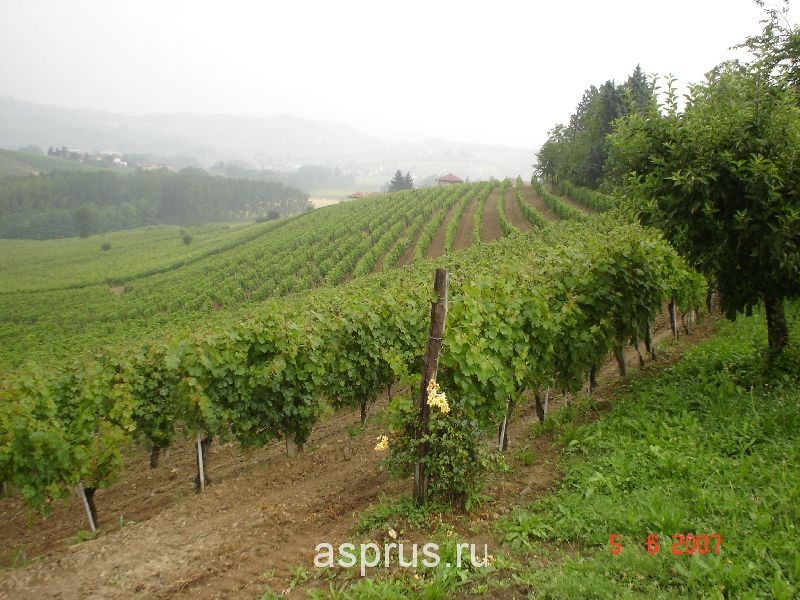 Industrial cultivation of grapes
Industrial cultivation of grapes
The YUG-POLIV company offers drip lines with ROOTGUARD technology (isolation of Treflan herbicide in safe doses to combat clogging of drip lines with plant roots).
All systems are equipped with fertilizer feeders, and pipelines and other components are made of high-strength plastic resistant to aggressive liquids, which allows the system to be used throughout the life of the vineyards.
Excellent results were obtained when irrigating a grape school in a combined way - drip irrigation of the root zone and sprinkler irrigation to create optimal air humidity and improve the survival rate of grafted grape seedlings.
In 2014, the YUG-POLIV company, together with the Kuban farm, conducted a production experiment - a comparative assessment of the cultivation of Moldova grapes with drip irrigation and without irrigation. The climatic conditions of the year were characterized by a dry summer. Landing pattern 3.5 X 2.0.
The drip irrigation system consisted of the following components:
- For water filtration, a vacuum-washed automatic mesh filter (YAMIT, Israel) was used. The filter is compact, provides a good degree of water purification. Throughput 40-300 m3/hour. Differs in the minimum losses of water at washing.
- Drip lines VERED - compensated, highly clog-resistant, companies (Metserplas, Israel), wall thickness 36 mils. The distance between droppers is 0.5-1.0 m. Water consumption is 1.6-3.5 l/hour.
- Fertigation unit for 200 l. (YAMIT, Israel).
When calculating the nutrition system of grapes by fertigation, coefficients were used for the use of fertilizers by plants. For nitrogen fertilizers - 1.1, for phosphorus, respectively - 1.6, for potassium - 1.6.
Table 1
Approximate share of the main nutrients by growing periods under fertigation conditions, %
Grapevine, in addition to macronutrients (N, P, K), is in dire need of micronutrients. The imbalance of nutrients affects, first of all, the quality of berries. To increase the physiological activity of plants, the yield and quality of berries, foliar top dressing is effective. In the experiment, we used the nutrition system of grape plants developed by Serbian colleagues.
table 2
Fertilizer application system FITOFERT ENERGY
| growth stage | Fertigation | kg/ha | Foliar top dressing | l(kg)/ha |
| Branches 5 cm | FITOFERT ENERGY NPK 20-20-20 BALANCE | 50 | FITOFERT ENERGY NPK 0-5-3 MANZIN + FITOFERT ENERGY NPK 2-0-2 BIOFLEX | 1+3 |
| Branches 10 cm | FITOFERT ENERGY NPK 20-20-20 BALANCE | 50 | ||
| 15 days before flowering | FITOFERT ENERGY NPK 5-55-10 START | 40 | + FITOFERT ENERGY NPK 2-0-2 BIOFLEX | 1+3 |
| 7 days before flowering | FITOFERT ENERGY NPK 5-55-10 START | 40 | FITOFERT ENERGY NPK 1-0-0 BORMAX 20 + FITOFERT ENERGY NPK 2-0-2 BIOFLEX | 1+3 |
| fruit ovary | FITOFERT ENERGY NPK 20-20-20 BALANCE | 50 | FITOFERT ENERGY NPK 2-0-0 CALCIFOL 25 | 2 |
| 15 days later | FITOFERT ENERGY NPK 20-20-20 BALANCE | 50 | FITOFERT ENERGY NPK 2-0-0 CALCIFOL 25 | 2 |
| bunch formation | FITOFERT ENERGY NPK 15-5-33 ASSET | 40 | FITOFERT ENERGY NPK 2-0-0 CALCIFOL 25 | 2 |
| 15 days later | FITOFERT ENERGY NPK 15-5-33 ASSET | 40 | FITOFERT ENERGY NPK 2-0-0 CALCIFOL 25 | 2 |
| Coloring | FITOFERT ENERGY NPK 0-15-45 FINISH | 40 | FITOFERT ENERGY NPK 2-0-0 CALCIFOL 25 | 2 |
| 15 days later | FITOFERT ENERGY NPK 0-15-45 FINISH | 40 |
Spraying was carried out in the morning or evening. The consumption of the working solution is 600-1000 l/ha.
It can also be combined with Bordeaux liquid or better with its substitutes (zineb, cuprosan, phthalan).
Foliar fertilization of vineyards with microelements against the background of the main nutrients (fertigation) contributes to better absorption of essential nutrients, a decrease in leaf chlorosis, and an increase in the productivity of bushes.
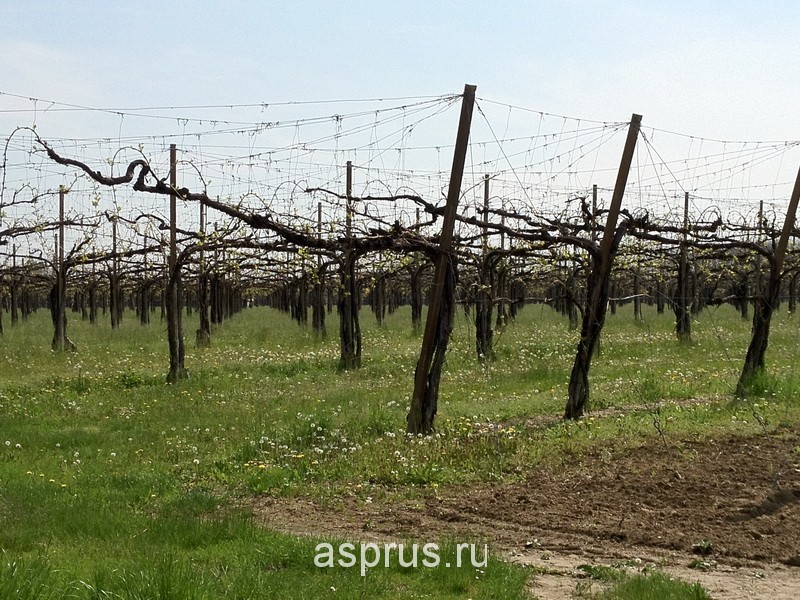 Formation of grape plants for industrial plantings
Formation of grape plants for industrial plantings
Table 3
Productivity of grapes, t/ha
Under drip irrigation, the vines have more growth with enough strong shoots for fruit vines for next year's harvest. In addition, more grapes best quality, larger berry size, higher sugar content, which ultimately affects revenue.
The use of a drip irrigation system for grapes allows you to fully reveal the potential of the grape plant and significantly increase the yield and makes the production process stable and predictable.
The drip irrigation system is certainly aimed at achieving economic and environmental results. First of all, it is a comprehensive economy:
- scarce in the southern agricultural regions of water;
- expensive mineral fertilizers, which, together with irrigation water through the irrigation system, are dosed into the soil;
- drip irrigation is a reliable way to control and manage the water regime and the balance of minerals in the soil;
- planting material, since drip irrigation prevents the sparsity of plantings, which are designed "under the drop", and the droppers are located at the optimal distance from each other;
- time, prerequisites are created for obtaining the first harvest a year earlier than the usual time of entry into fruiting;
- labor force because automated system drip irrigation is able to serve a limited staff,
- payroll costs.
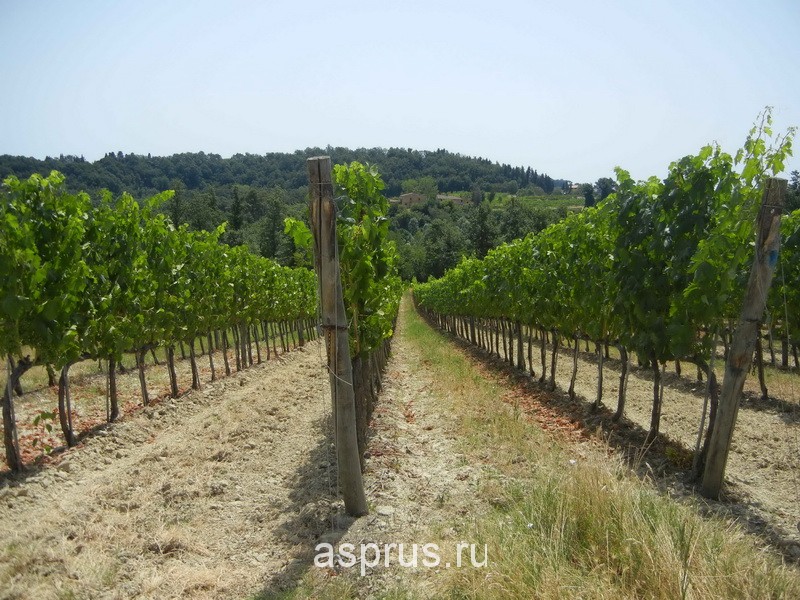 Young industrial grape plantation
Young industrial grape plantation
The cost and payback period of a project (with economic and agronomic justification) of a drip irrigation system can vary greatly depending on many objective and subjective factors:
- terrain;
- distance from the water source;
- irrigation system area;
- cost of components for the system
- quality and more.
Modern industrial viticulture in Russia is not possible without the use of intensive plantation cultivation technologies that provide consistently high yields with specified fresh consumption quality standards.
Fertigation is an integral advantage of DIS, and the final result directly depends on the quality of the applied fertilizers. At present, the Yug-POLIV company is engaged in the sale of Serbian fertilizers of the FERTICO company. Farmers get very good results from the use of Serbian fertilizers not only for fertigation, but also for foliar feeding. Foliar feeding significantly improves product quality.

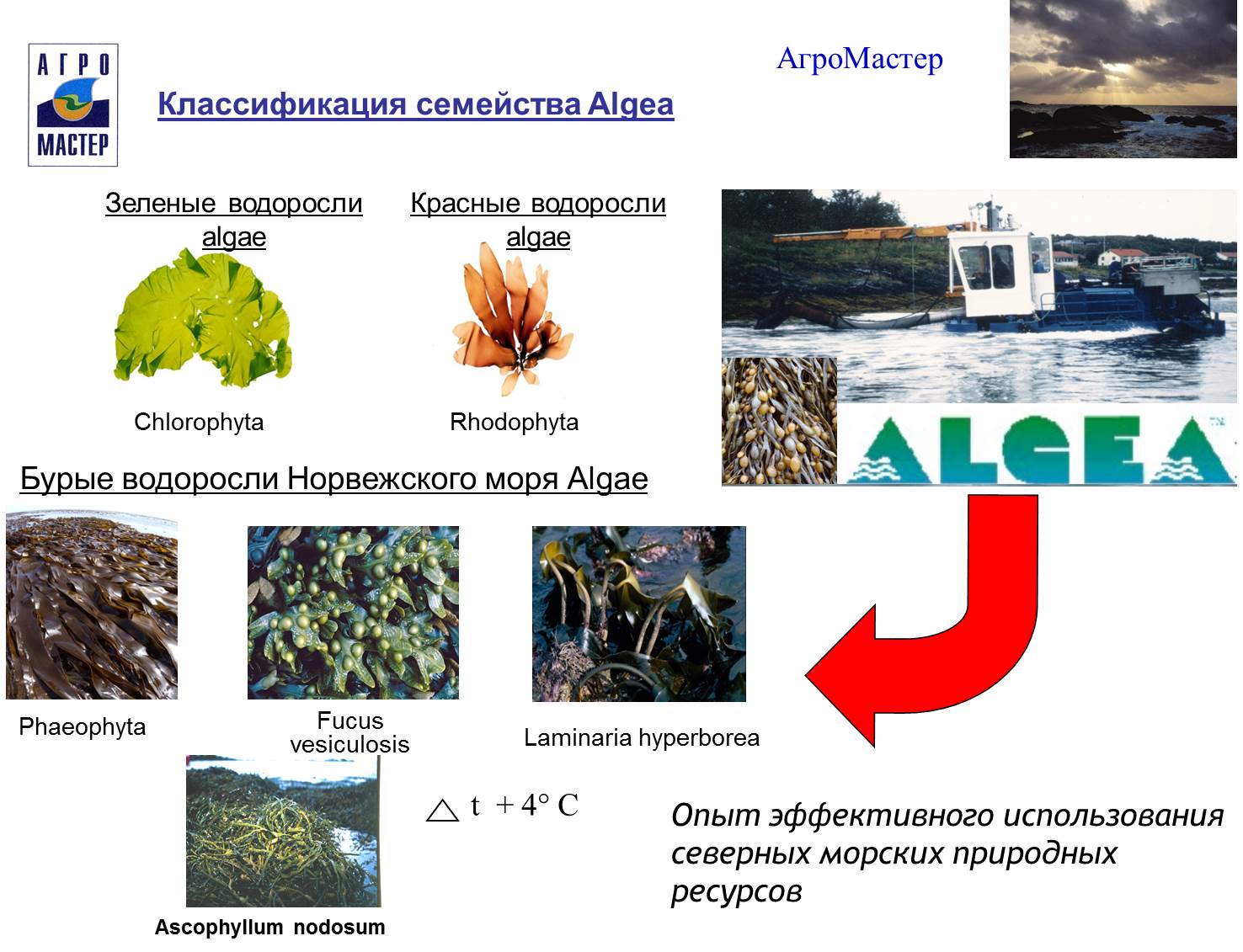
What does ACTIVAVE do?
ACTIVEWAVE increases the ability of the plant's root system to assimilate nutrients.
The product thus:
- Increases yield
- Increases the uptake of nutrients (available in the soil) and optimizes the use of elements introduced during conventional treatments, even at very high pH levels, in heavy soils, in dry or wet conditions.
- Overcomes slow metabolism caused by environmental stress.
In order for ACTIVEWAVE to have an effect, it should be used as a root dressing.
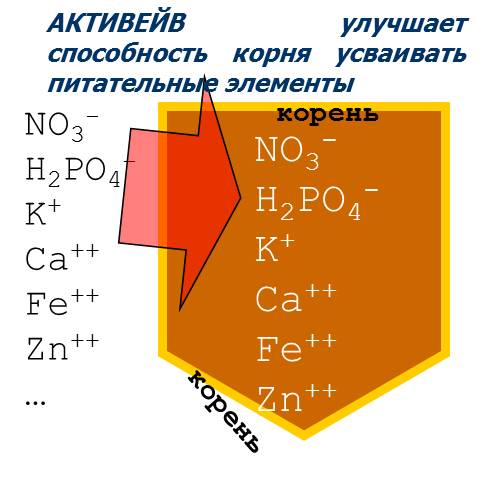

Assimilation of nutrients:
Action Cayhydrin
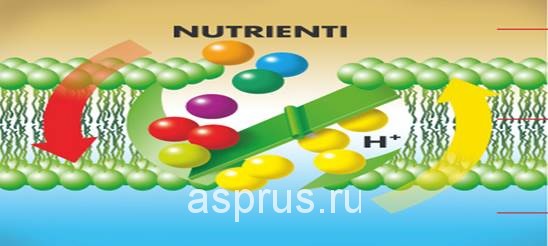 Cayhydrin stimulates the production of protons (H+) within the cell, as it acts as an electron acceptor [(H) – electron = H+].
Cayhydrin stimulates the production of protons (H+) within the cell, as it acts as an electron acceptor [(H) – electron = H+].
Assimilation of cations (approx. K +, Mg 2 +)
Pushing protons out of the cell creates an electrical voltage. The inside of the cell membrane becomes negatively charged and requires uptake of positively charged ions to restore the neutral balance. Positively charged ions are absorbed including nutrient cations (K+, Mg 2+) as well as some protons which are reabsorbed.
Anion uptake (NO 3 -)
Negatively charged anions are also absorbed; they are assimilated in a different way, in contrast to positively charged cations.
Anions outside the cell combine with positively charged protons that have been expelled outside the cell. These compounds are picked up by the transport system, which is in the process of absorbing charged ions.
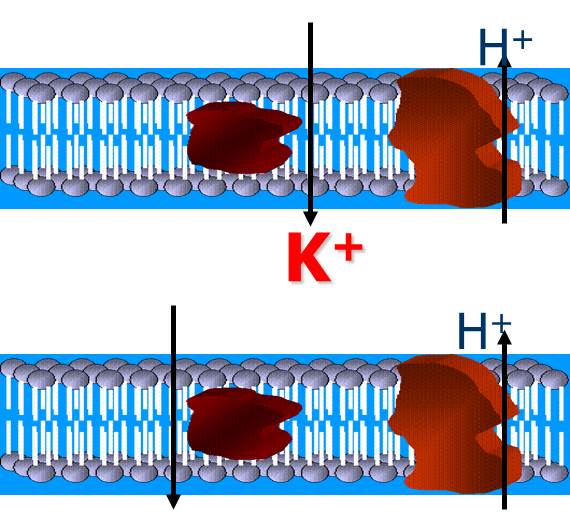
Results of using Activave in drip irrigation systems, on fruit crops
The yield of apples (CJSC Firm "Agrocomplex", the enterprise "Vyselkovskoye", 2006)
Experimental experiments
strawberries
Year: 2003
Location: E.Pantanelli Experimental Station
Variety: Paros, Tadnyu
Processing:
- CONTROL
Traditional nutrition program (ton/ha)
— ACTIVEWAVE
15 l / ha; 7 (seven) applications, three applications during the vegetative phase (autumn) and four applications during the reproductive phase (February - April)
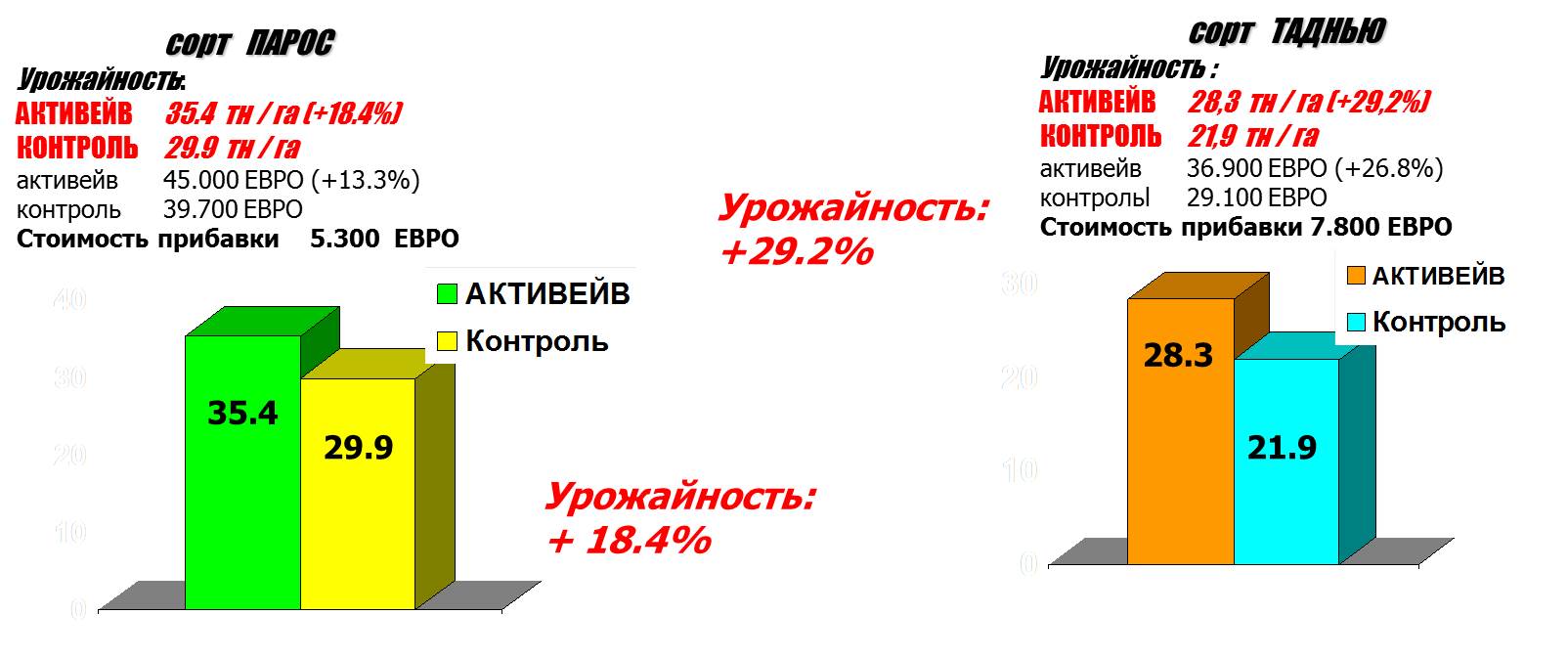 Results - Yields and Economics
Results - Yields and Economics
Fruit and berry crops
Culture: Strawberry
Norm: 7.5-15 l/ha
cold protected
- - 2 applications after transplantation and before the autumn period of dormancy, 15 days between applications.
- - when vegetative growth resumes, 2-3 applications before flowering
2nd and subsequent years
- - 3-4 treatments before flowering
Note: The use of the drug during the fruiting period should be avoided, because anyway a large increase in yield will be achieved, strawberries can also be very difficult to store. This is especially true on highly fertile soils (excess nitrogen or potassium).
Culture: Plum, Peach, Apricot
Norm: 7.5-15 l/ha
Main application program:
I application at the end of the flowering period - fruit ovary
II application during the phase of the beginning of active growth of the fetus.
III application 10 days after the previous application
IV application after 10 days
Culture: apple tree
Norm: 7.5-15 l/ha
Application program:
I application at the beginning of the formation of the ovary
II application after 15-20 days
III application 15-20 days after the second
IV application 15-20 days after the third
Note: The 4th treatment can be split into two, but at lower application rates, to cover a longer period of time (eg potash application) corresponding to a larger increase in fruit size and ripening period.
Pear
The product can also be used on pears:
- increase in fetal growth rate
- increased absorption of nutrients
Especially useful during summer period and after harvest
Norm: 7.5-15 l/ha
Application program:
I is applied when the fetus has reached 3/4 of its size
II 15 days later
III after harvest
What is RADIFARM?
ROOT SYSTEM DEVELOPMENT BIOSTIMULATOR
- POLYSACCHARIDES- improve the penetration of nutrients and water into the cells of the plant.
- GLUCOsides(glucose, arabinose, rhamnose) - useful at an early stage of development, increase the immunity of the plant.
- STEROIDS- improve the penetration of nutrients into the root of the plant, stimulate the development of the root system and the synthesis of chlorophyll.
- BETAINES- stimulate the synthesis of chlorophyll, increase the ability of the root system to absorb water, increase the resistance of plants to low temperatures.
- tryptophan(indolyl-acetic acid) - stimulates the growth of meristem tissues (root tips).
- VITAMIN COMPLEX- vitamin B1 (stimulation of the growth of the root system), vitamin B6 (accelerates metabolic reactions), biotin (improves the absorption of CO2), vitamin PP.
- ZINC- increases the content of auxins, participates in the synthesis of indolyl-acetic acid, which is necessary for early stages growth and after planting seedlings.
- IRON- participates in the synthesis of chlorophyll and accelerates metabolic processes.
 RADIFARM stimulates the uniform development of lateral and additional roots from all sides.
RADIFARM stimulates the uniform development of lateral and additional roots from all sides.
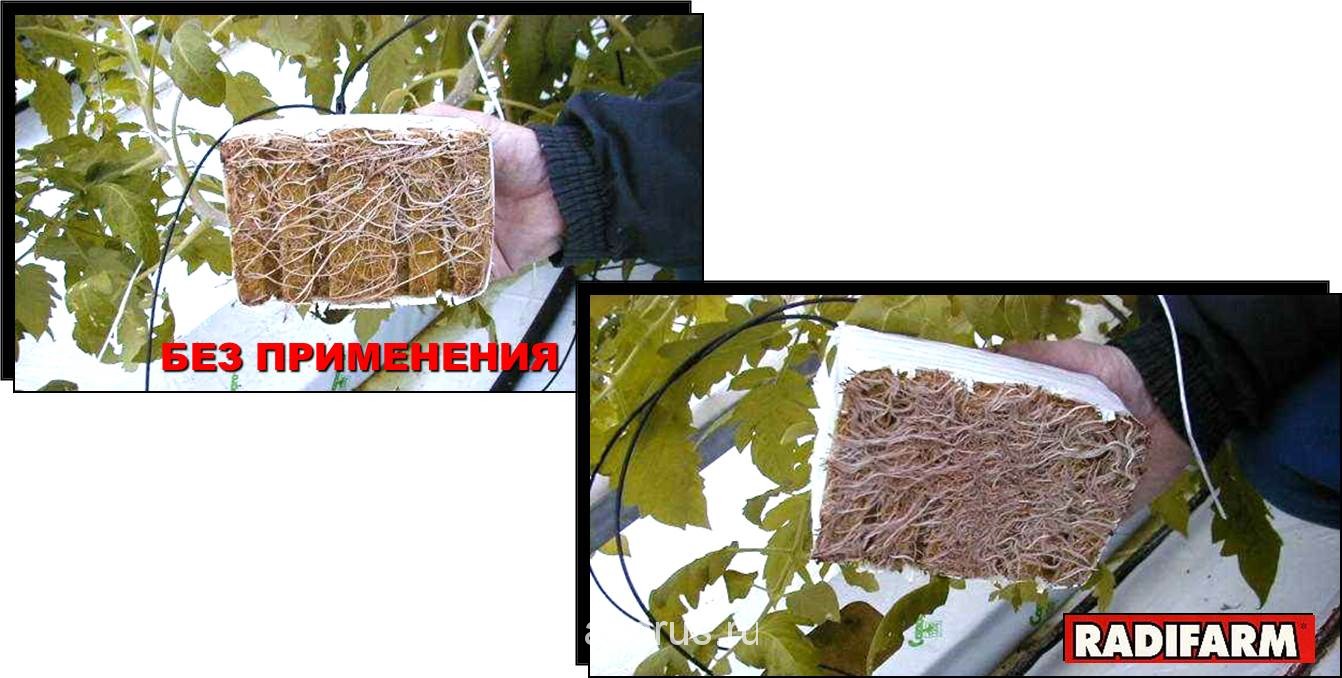
Application information
- RADIPHARM is a liquid biostimulant intended for root feeding, seed and planting material treatment.
- Radifarm penetrates deep into the soil (substrate), thus nourishing the entire root system.
- After using Radifarm during the first days, it is recommended to reduce the irrigation rate in order to avoid washing out of the drug.
- Radipharm can also be applied during sprinkler irrigation. Not phytotoxic when in contact with the leaf surface.
- Radipharm is compatible with most soluble fertilizers used in drip irrigation systems and low volume hydroponics.
Application Methods
- RADIPHARM is best used in combination with a fertilizer solution directly during transplantation. The second application of the drug is made 7-10 days later.
- RADIPHARM can also be used for drip irrigation (fertigation). In this case, the droppers should be at a small distance from the plants so that the root system is well treated with a solution.
What is VIVA?
VIVA is a liquid nutritional complex containing plant extracts (proteins, peptides, amino acids), vitamins, polysaccharides and humic acids.
VIVA is used as a top dressing after the formation of the root system on all types of soil (sandy, heavy, low organic matter), can also be applied on a sheet.
- Vitamins vitamin B1 (stimulates the growth of the root system), vitamin B6 (accelerates metabolic reactions), biotin (improves the absorption of CO2), vitamin PP.
- Polysaccharides stimulate the development of soil microflora, a source of energy for plants.
- Humic acids improve the structure and properties of the soil, stimulate plant growth, increase resistance to low temperatures.
What does VIVA do?
- Stimulates the development of the root system
- Restores the microbiological activity of the soil
- Has a general stimulating effect on plants
- Increases resistance to salinity
- Improves the formation of fruits, prevents shedding of the ovary
- Increases yield and product quality
Using VIVA?
VIVA is designed to be applied to the soil after the development of the root system.
VIVA is applied to the soil by sprinkling or drip irrigation after the formation of the root system. Drip irrigation is the best way to apply VIVA.
VIVA is not phytotoxic when it comes into contact with the leaves of the plant.
Experimental studies
Experimental station Noorderkempen. Belgium.
Seedlings of the Elsanta variety were planted in July 2001. The seedling was processed as follows:
- Control
Viva: watering with a solution
(500ml Viva/100l water)
Table 1: Analysis of the root system 2 weeks after the application of Viva (August 2001)
Tab. 2: Strawberry yield after two applications in autumn and two applications in spring (interval 15 days). April/May (2002) in a tunnel with soil mulching.
What is MEGAFOL?
Megafol is a liquid anti-stress biostimulator made from vegetable amino acids with prohormonal compounds.
Improves the penetration of nutrients into leaf tissues, acts as a transport agent.
- can be used in conjunction with pesticides and foliar fertilizers.
- enhances the effectiveness of pesticides and fertilizers when combined.
- has the property of an adhesive (reduces the flow of the working solution from the leaf surface).
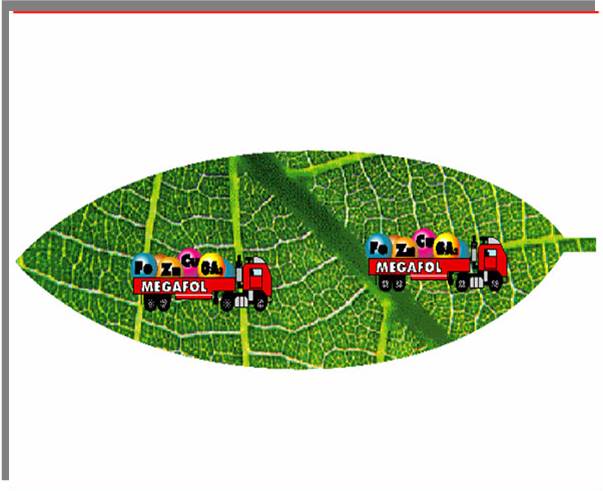
Protects plants from stressful influences (hail, low temperatures, high temperatures, wind, mechanical damage, diseases).
Application before frost (or after chemical burns) allows you to save and restore plants.
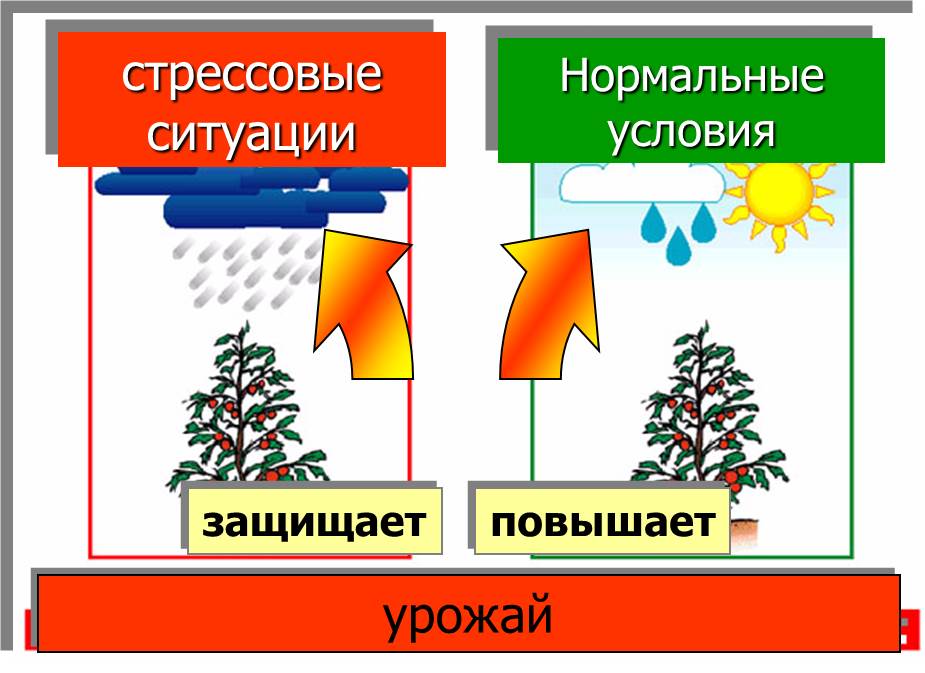
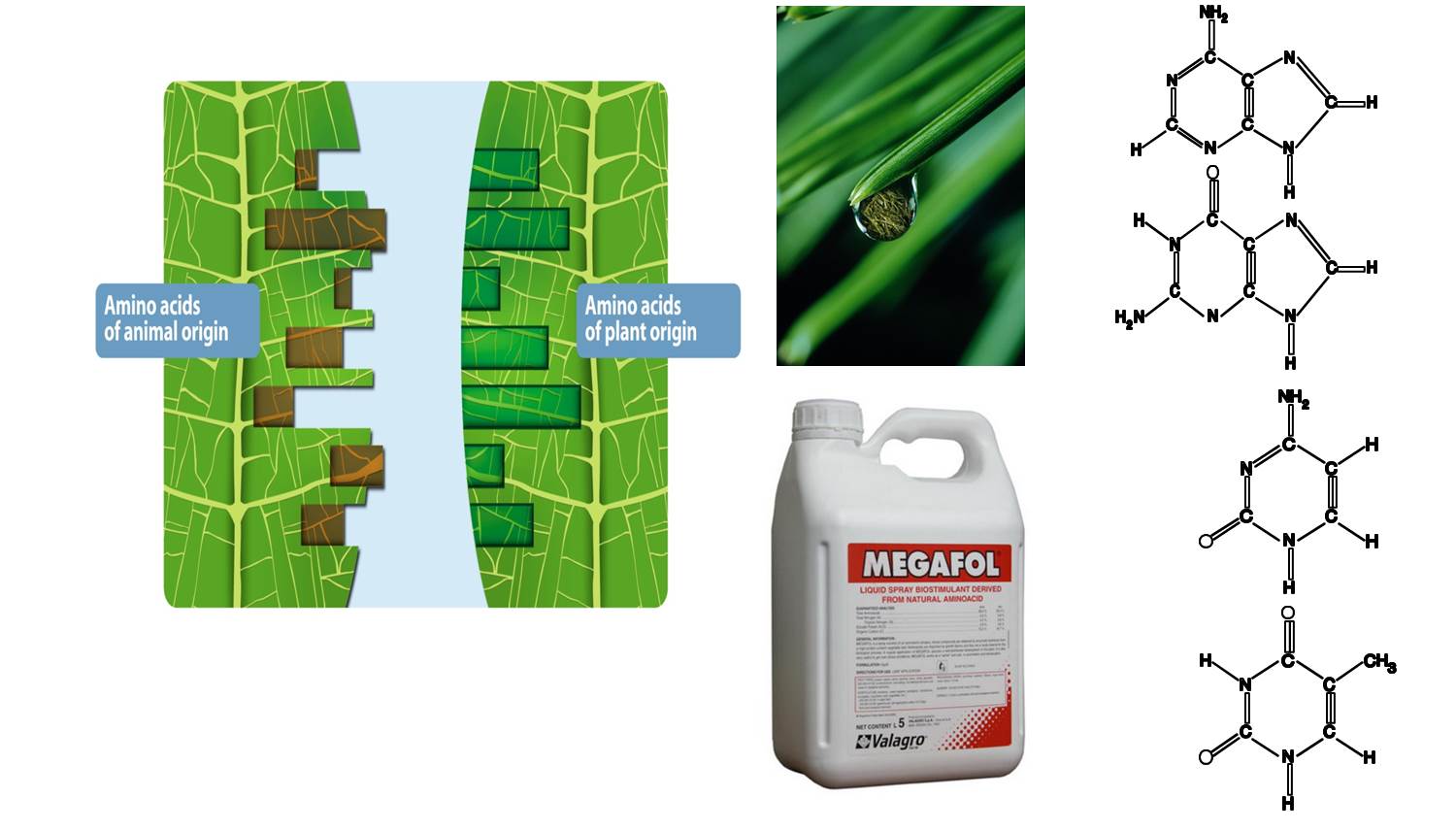 Antistress - only energy products!
Antistress - only energy products!
Megafol is a ready-made energy reserve!
Application of MEGAFOLA on apples:
- Variety: Golden Delicious M9
- Venue: Val di Non, Trento, Italia
- Dose of Megafol: 250 ml/100 liters of water
- Processing method: foliar application
- Number of treatments: 4
- Control: standard nutrition program
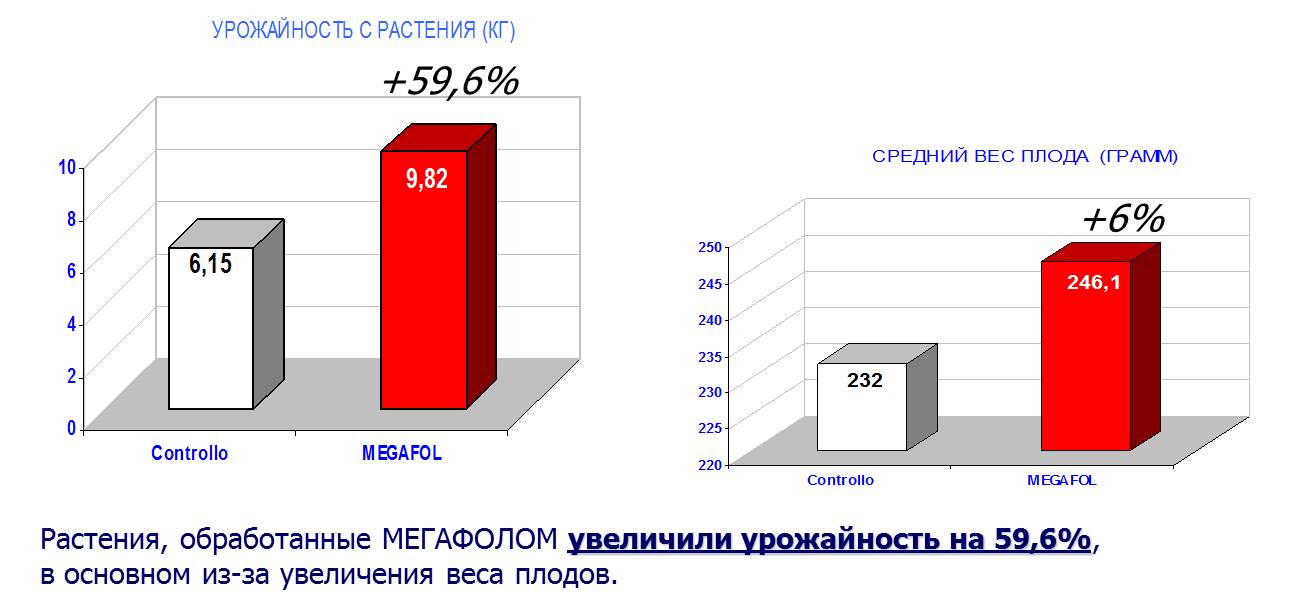 Application of MEGAFOLA on apples
Application of MEGAFOLA on apples
Megafol on an apple tree
Drop off distance: 3.8m x 1.0m; sandy soil.
Age: 5 years old
Random sampling with 4 repetitions at 3 sites.
Harvest: 01/10/03
Yield results
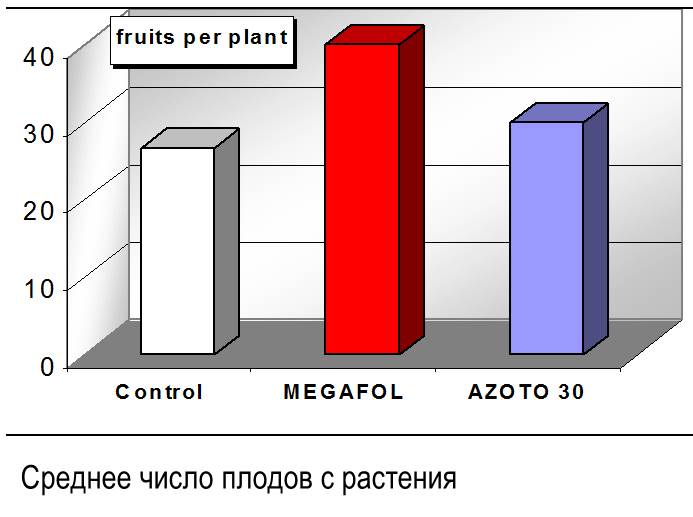 Megafol on an apple tree
Megafol on an apple tree
What is BENEFIT PZ?
Main components:
- Nucleotides (DNA, RNA)
- Amino acids (proteins)
- Vitamins (metabolism activators)
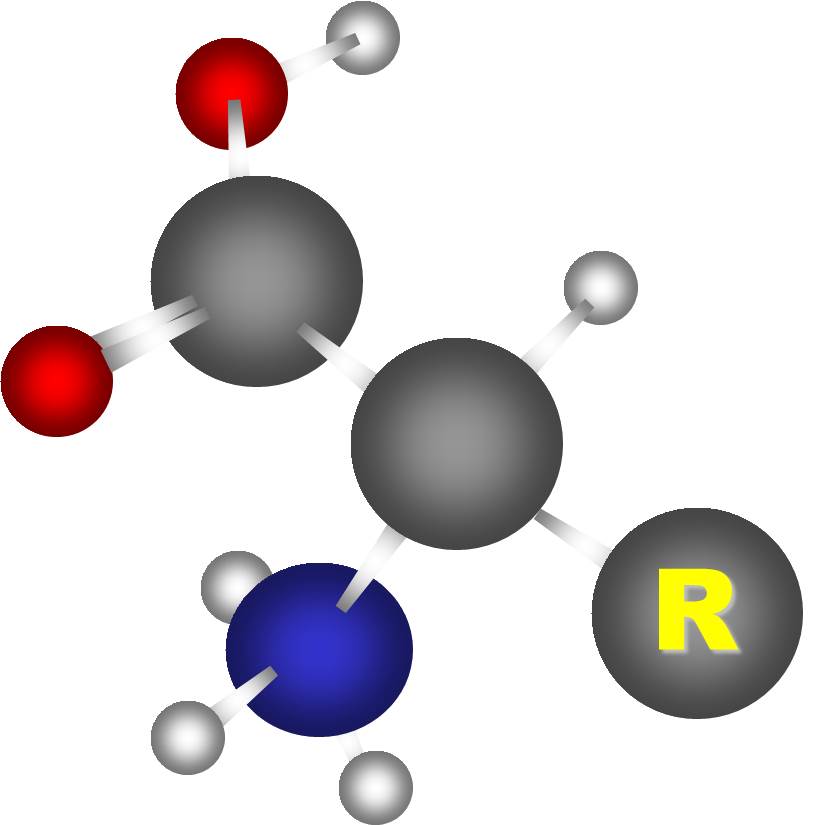
An increase in the amount of DNA occurs during cell division. The use of Nucleotides stimulates cell division and increases their number in the fetus.
Amino acids are the building blocks of proteins, are involved in metabolic reactions and are part of the structure of the vegetative tissue.
Vitamins are activators of many metabolic reactions.
Experience: apricot
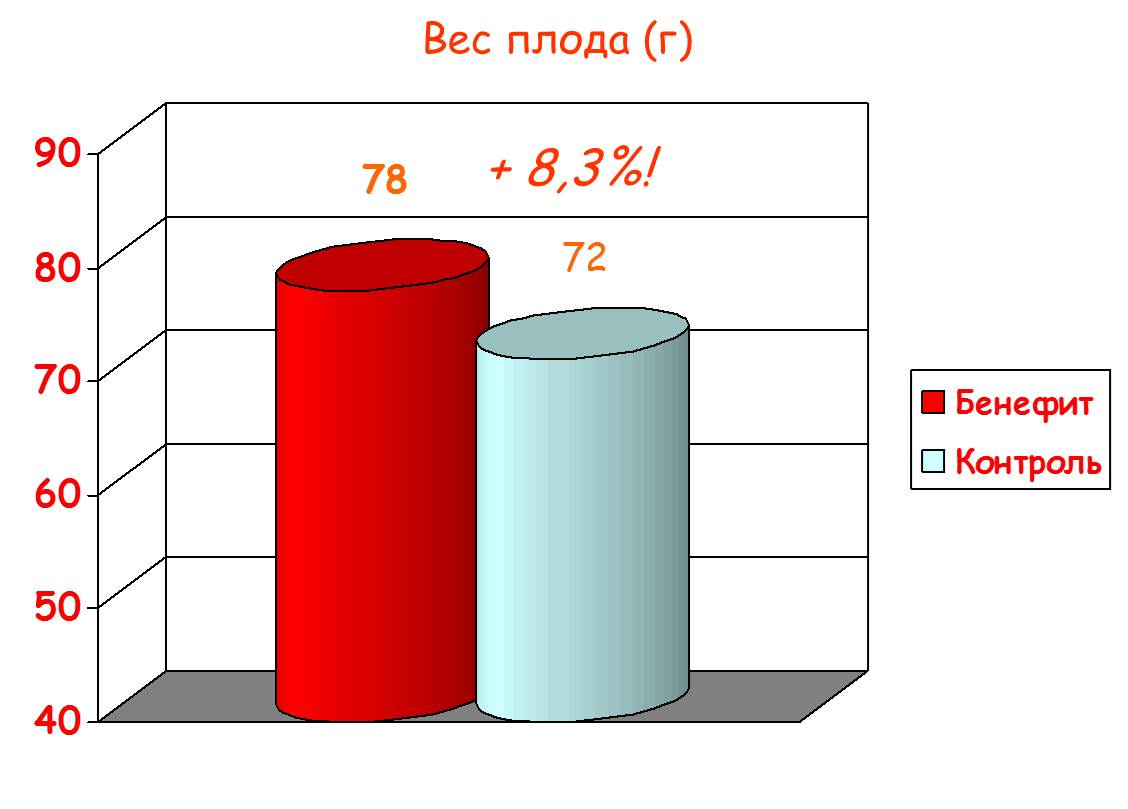 Experience: apricot
Experience: apricot
Location: Emilia - Romania
- Application rates:
Fruit crops: 3.0 - 4.5 l/ha (application of at least 800 l/ha of solution) - Number of entries:
Each fruit should be processed three times with an interval of 7-10 days. This means that all fruit crops need to be treated three times after fruit set, while vegetables require three to five treatments and even more, depending on the period of vegetative growth.
What is KENDAL?
KENDAL is a biostimulant that enhances self-protection in plants. It is composed of organic substances that help plants enhance their natural self-defense processes.
Provides:
- significant reduction in incidence
- neutralizes the action of toxins of various pathogens
- increase in color saturation and quality of the leaf surface
- increasing the yield and quality of green vegetables
How does KENDAL work?
- Oligosaccharides activate the synthesis of natural plant antibiotics;
- The complex of special amino acids neutralizes toxins;
- Plant extracts support the plant's metabolism by providing available nutrients and increasing their absorption;
- Potassium provides the well-recognized benefits of increasing plant immunity. The thickness of the cell walls increases the physical resistance to the penetration of harmful organisms.
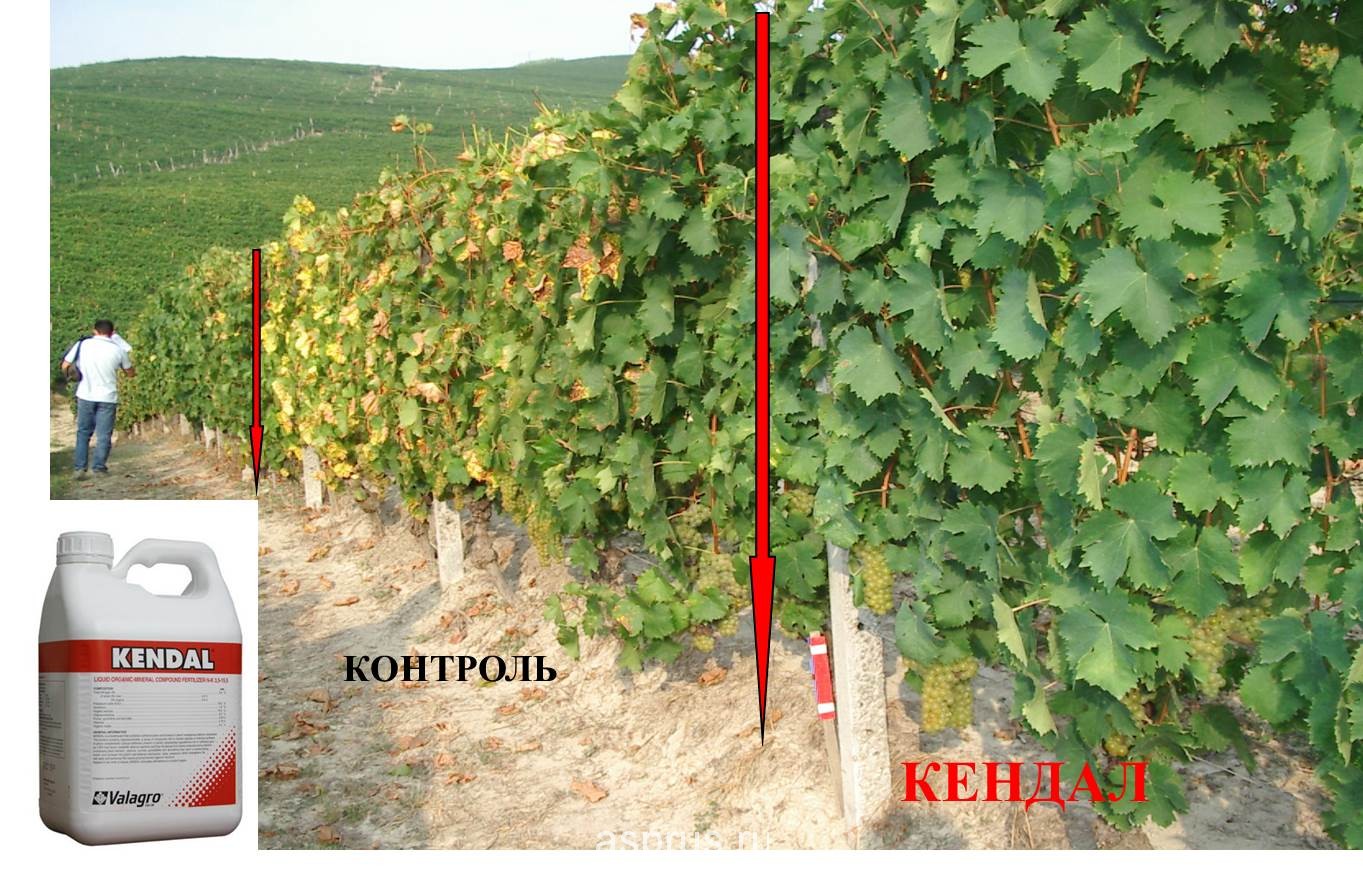
SWEET
Biostimulant to improve fruit color and increase sugar concentration
- Mono-di-three polysaccharides…………………..28.0%
- Uronic acids ………..……………………….0.3%
- Mesoelements (MgO, CaO)…………………….11.0%
- Trace elements (B, Zn, Co)……………………..0.3%
MECHANISM OF ACTION
ENZYME ACTIVATION → Pigment biosynthesis, sugar biosynthesis, pectin biosynthesis.
Biostimulant to improve the color of fruits and increase the concentration of sugars.
Results:
- Ripening uniformity
- Increasing the sugar content
- Improved fruit color and taste
- Strengthening fruit tissue
 AGRONOMIC BENEFITS
AGRONOMIC BENEFITS
Material prepared:
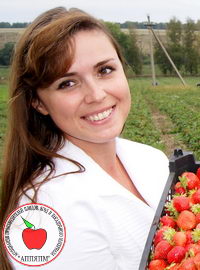
Deputy Executive Director of the Russian Horticultural Association (APPYAPM), Leading Specialist of the Association of Horticultural Nurseries (ASP-RUS) for berry crops
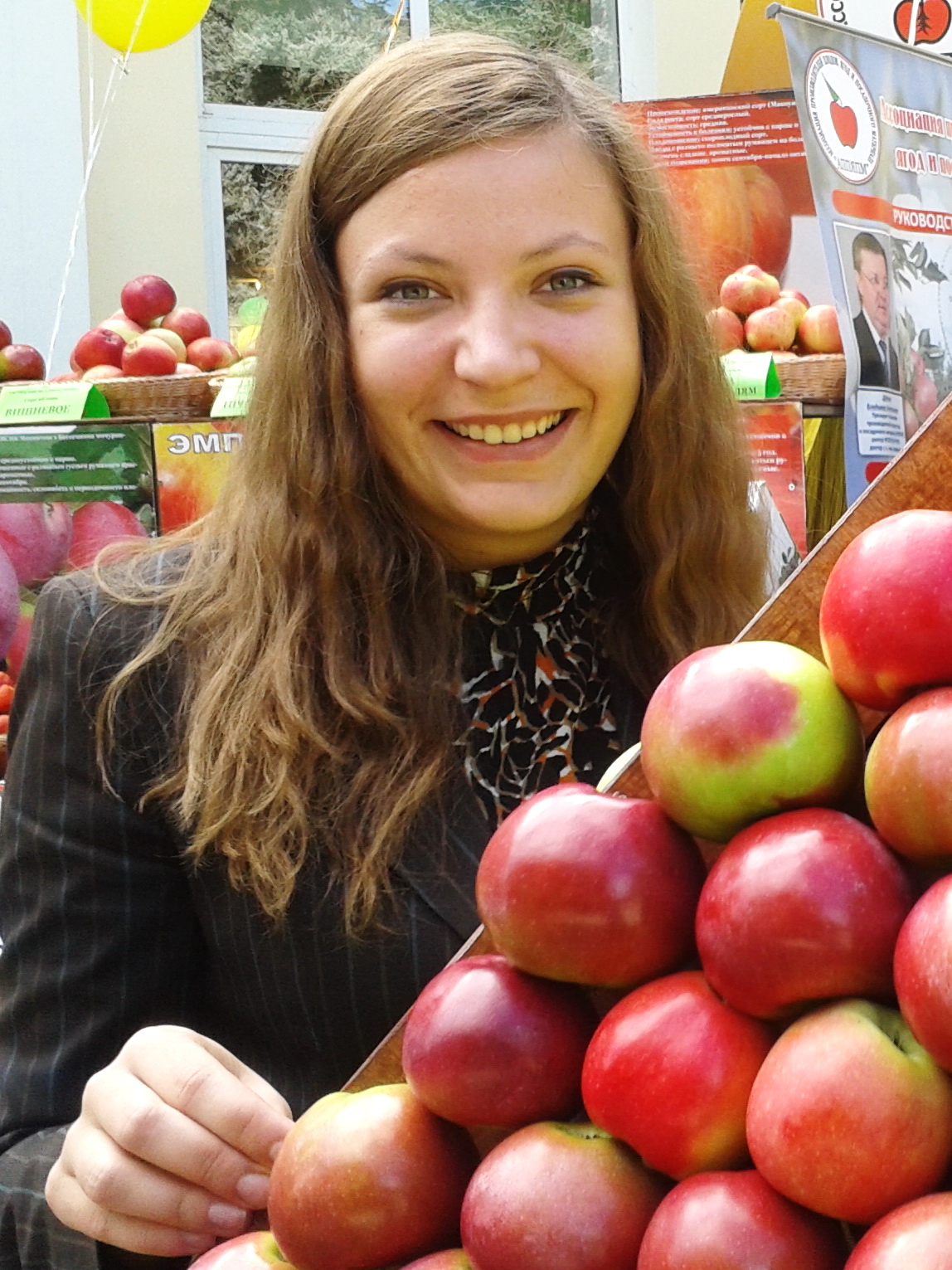
Specialist of the ASP-RUS Association, student of MichGAU
Viral and fungal diseases of raspberries
Part 3 - Modern pesticides and control methods
The effectiveness of the use of promising fungicides in viral and fungal diseases of raspberries
In developed countries, high efficiency in the fight against viruses and fungal diseases has shown such fungicides as:
Switch®
Highly effective against late infection with powdery mildew, gray rot. Good effect against powdery mildew, anthracnose and late blight leather rot.
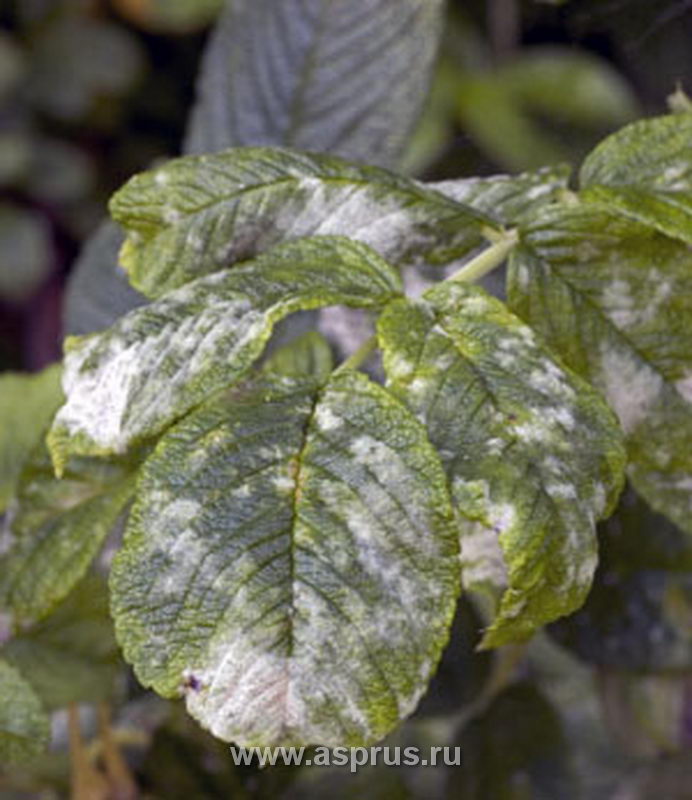 The manifestation of powdery mildew on raspberry leaves
The manifestation of powdery mildew on raspberry leaves
Requirements:
- The main goal is to obtain a preventive effect, preventing the spread of the fungus.
- It is necessary to provide good lighting for the plantation.
- The effectiveness of treatments is enhanced by using a larger amount of solution (from 800 l/ha) by increasing the number of sprayers for high-quality wetting of the bases of strawberry bushes. The effect is enhanced when using special sprayers with local application of pesticides.
- It is necessary to ensure that at least 4 hours have elapsed after pesticide treatment. If it rains earlier, it is necessary to repeat the treatment.
- Switch® compatible in tank mixes with most pesticides and microfertilizers, but should not be mixed with calcium fertilizers and with preparations like Seniphos®.
- Switch® allowed to use without loss of effectiveness twice per season. The waiting period before harvest is 10 days.
- The drug is effective on raspberry plants. Switch® has two active components in the plant protection system.
- The first treatment against gray rot on raspberries must be done at the beginning of flowering.
- By protecting the flowers and ovaries during the flowering period, you protect the berries from infection during harvest.
- By effectively protecting plants during the initial flowering period, you limit the secondary infection of the last untreated flowers and subsequently ensure the protection of your crop during harvest.
- Switch® it is most effective to use photoneutral raspberry in a protection program in sequence with other fungicides.
- Using Switch® more than twice per season, there is a high risk of causing resistance of the fungus to the effects of the drug.
- The first treatment should be carried out a week before flowering.
- Gray rot from 0.8 to 1.0 kg/ha
- Anthracnose 1.0 kg/ha
- Late blight leather rot 1.0 kg/ha
- Powdery mildew 1.0 kg/ha
The drug is also effective against gray rot. It is used during flowering waiting period 1 day.
Amistar®
Effective against powdery mildew and gray mold.
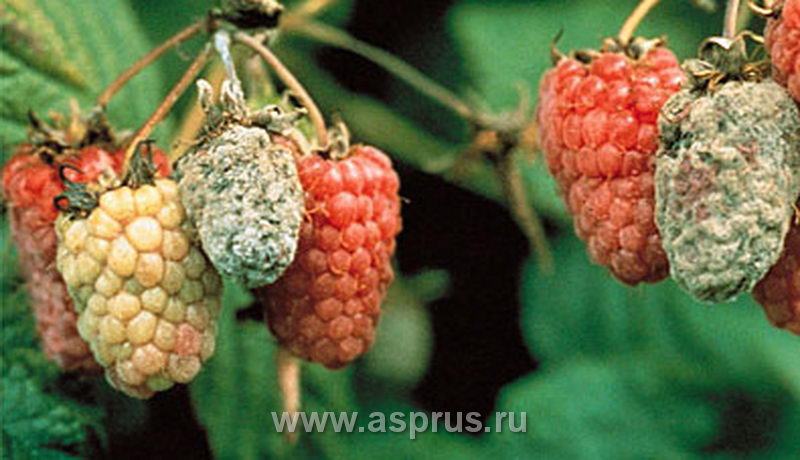 Raspberry gray mold infestation
Raspberry gray mold infestation
- Amistar most effective in the prevention of fungal diseases.
- Amistar it is better to use before the middle of flowering.
- Amistar systemic preparation with a long period of protection of strawberry plants.
- Amistar does not inhibit raspberry plants.
- Amistar- 1 hour is enough effective impact on plants during precipitation.
- Amistar use effectively in open field, in tunnels and in greenhouses.
- Amistar
Amistar can be used a maximum of two times per season to reduce the risk of resistance
- The first treatment against powdery mildew is usually carried out a few weeks before flowering.
- Amistar effectively fights fungal diseases, as a prophylactic drug, so treatments should be started when there is a real risk of infection.
- Controls for powdery mildew suppression are carried out at approximately 2-week intervals.
Amistar protects the treated parts of plants against fungi for 1-2 weeks, depending on the stage and rate of plant growth, infection of the plantation with diseases and the dosage of the drugs used.
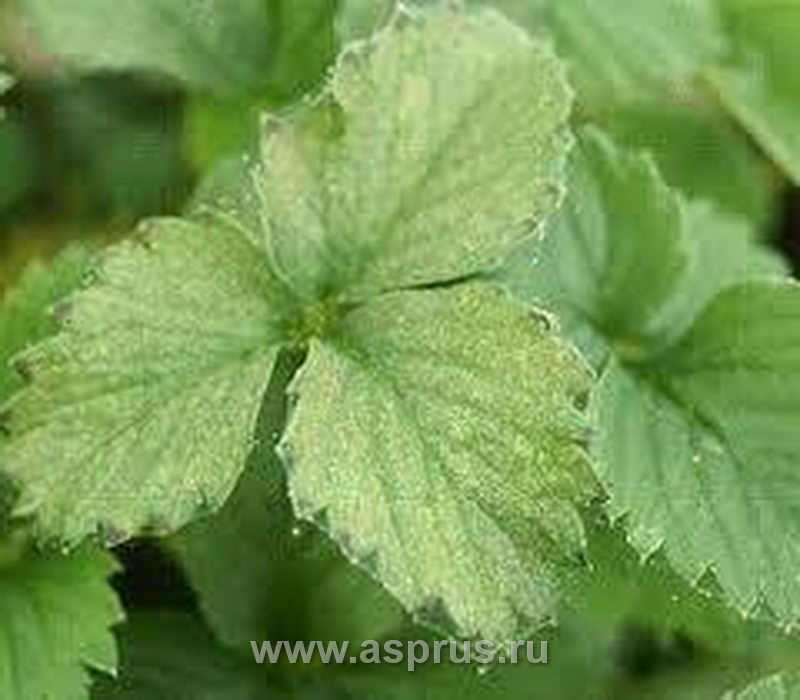 Raspberry leaves damaged by spider mites
Raspberry leaves damaged by spider mites
Topas®
Effective against late infestation with powdery mildew.
- Topaz both preventive and therapeutic broad-spectrum fungicide is used, which is effectively used on industrial raspberry plantations.
- Topaz long-acting systemic fungicide by moving the drug inside the plant to the upper parts of the leaf.
- Topaz compatible in tank mixes with most preparations and fertilizers used in the cultivation of photoneutral raspberries.
- Topaz after 2 hours it is not washed off by rain.
- Topaz can be effectively used in open ground and in greenhouses.
- Topaz can be used more than twice a season.
- It is important to prevent the spread of gray mold on the ovaries and raspberries.
- Powdery mildew suppression in the early stages of raspberry plant development is a good basis for a good harvest.
- Topaz most effectively protects treated plant parts from fungal infections.
Topaz in the fight against gray mold is effective both before infection and after, due to the fact that the drug is a systemic fungicide and moves with the juice throughout the plant.
Insecticides from Syngenta
AKTARA®
Effective against dangerous raspberry pests.
 Malicious raspberry pest - raspberry stem gall midge
Malicious raspberry pest - raspberry stem gall midge
1. Prophylactically applied twice a season (before flowering and after harvesting) after abundant irrigation through drip irrigation: AKTARA - 1-1.5 kg/ha.
2. In case of obvious damage to raspberry plants on an industrial plantation during the growing season, increased doses are applied through drip irrigation: AKTARA 1.5 kg/ha or Cruiser 0.8 l/ha.
3. It is important to pay special attention to preparing the soil for planting. For at least 3 months, when preparing the soil, there should be no vegetation on the field to destroy the beetle.
Protection of industrial raspberry plantations from insects
Pirimor®500WG
Highly effective insecticide against aphids.
- Pirimor 500WG has the best effect when the temperature is within 15-20°C.
- Pirimor 500WG applied in the morning so that the spray liquid comes into contact with harmful objects and then evaporates when the temperature rises.
- Pirimor 500WG- when used at lower temperatures (<15°C) необходимо использовать с самыми высокими дозами и с очень хорошим качеством обработки.
- Pirimor 500WG harmless to beneficial insects, including bees.
- Pirimor 500WG can be used up to 7 days before harvest.
 Lesser raspberry aphid
Lesser raspberry aphid
Aphid epiphytoties are most frequent in tunnels and greenhouses, but in the open field the damage from aphids can be very significant. It is necessary to closely monitor the development of this pest in early spring and take preventive measures in hot weather. All larvae of sucking insects prefer juice from young and tender leaves. In this regard, it is necessary to carry out protection already from the formation of the first leaves on a strawberry plantation. Aphid damage occurs when the infestation is very severe, plant growth can stop completely, which will negatively affect yields. In hot conditions, aphids reproduce very rapidly.
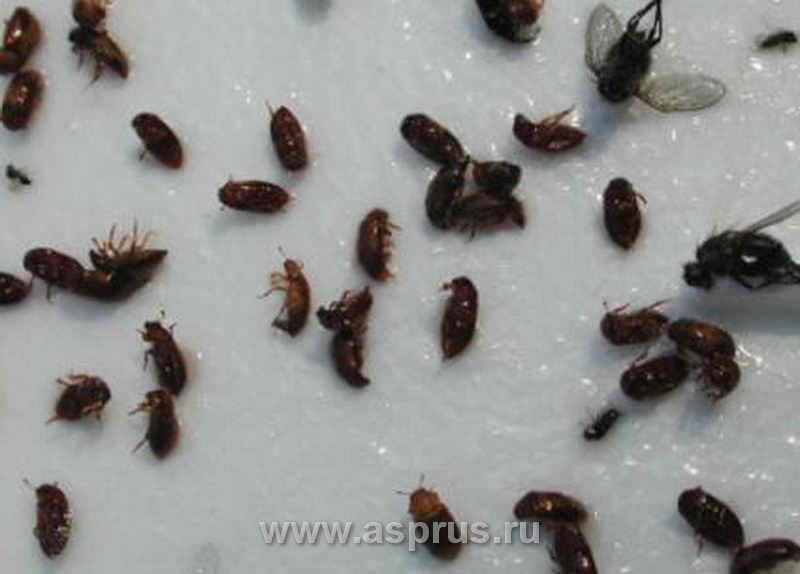 raspberry beetle
raspberry beetle
Protection of industrial raspberry plantations from ticks
Vertimec®
Effective on raspberries against ticks. Vertimec has a side effect on thrips.
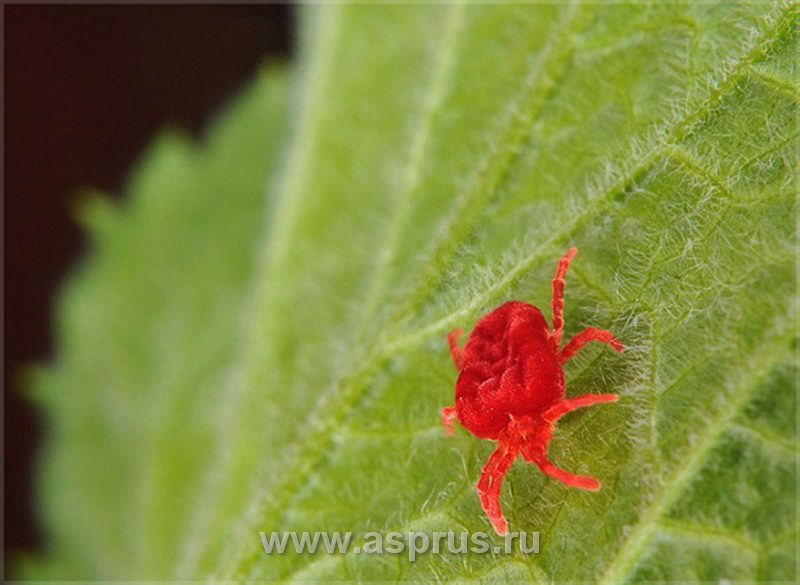 Red tick
Red tick
- Vertimec it is necessary to ensure high-quality wetting with the working solution of the entire surface of the leaves.
- Vertimec it is necessary to apply on raspberry plantations with a high consumption of working fluid (min - 1000 l / ha). In greenhouses and tunnels, at least 600 - 800 l / ha.
- Vertimec- to enhance the effect, it is necessary to add an adhesive (wetting agent) to the solution, unless another preparation is indicated on the package.
- Vertimec can be used no more than 2 times a year.
- Vertimec apply before flowering and after the removal of leaves after harvesting.
- Vertimec harmful to bees.
- Vertimec applied at night (decomposes quickly in the light).
With a strong infection of the plantation with a tick, it is necessary to repeat the treatment after 3-5 days. Applications should be carried out during the period of greatest mite activity at temperatures above 20°C 20 days before harvest. Due to the fact that the leaves are pubescent and often folded in the form of a boat, it is very important to apply the drug together with wetting agents to penetrate the working solution into the leaf.
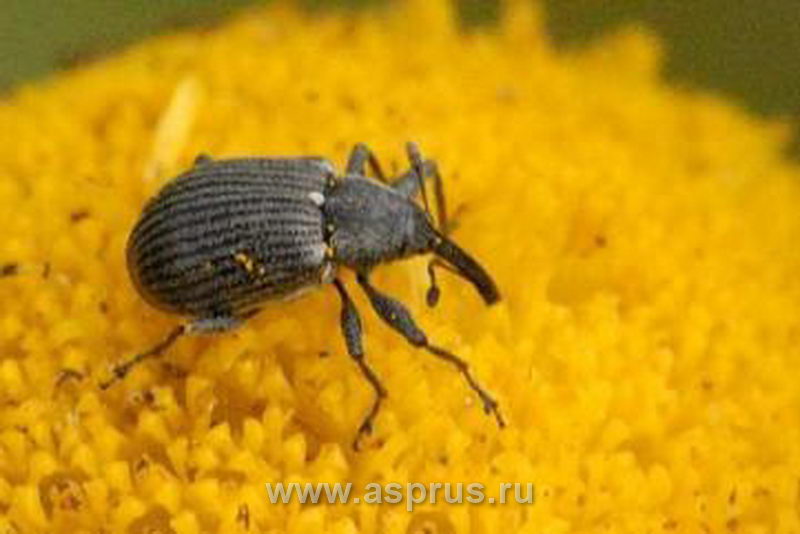 raspberry weevil
raspberry weevil
Weed control on a raspberry plantation
- Reglone- in weed control, the herbicide is applied exclusively at night, for the longest wetting period for weed plants.
- Reglone starts working immediately when plant leaves are exposed to sunlight.
- Reglone- in foggy and cloudy weather provides a slow but good effect.
- Reglone- when processing, it is necessary to ensure good wetting of plants for maximum effect.
- Reglone- it is necessary to process only those parts of the plants that need to be destroyed.
- Reglone- the full effect after weed treatment is observed after 3 - 10 days.
- Reglone- to achieve the effect, at least 10 minutes after treatment is required.
- Reglone– used in thickened plantations of photoneutral raspberries to kill leaves at the bottom of plants to facilitate plant protection.
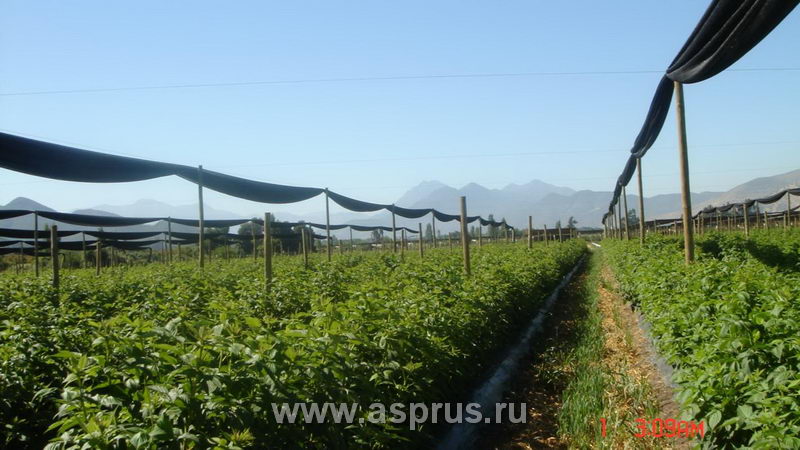 Industrial raspberry plantation
Industrial raspberry plantation
List of used literature:
- Based on materials from the book "Repairing Raspberries" in Russia by I.V. Kazakov, A.I. Sidelnikov, V.V. Stepanov // Research and Production Association "Garden and Garden" - Chelyabinsk, 2006
- Using the material of I.V. Kazakova, S.D. Aitzhanova, S.N. Evdokimenko, V.L. Kulagina, F.F. Sazonov "Berry crops in the central region of Russia", Bryansk 2009
- With material from Prof. Edward Zurawicz, Dr. Miroslawa Cieślinska.
- Using materials from Syngenta
The results of adaptation and the introduction of the "Integrated technology of high quality strawberry production" have been presented. The effect of high quality planting material, plant age, different coverings and protection system plant productivity in Central Chernozem Zone has been established.
Strawberries are one of the leading crops in berry growing. It accounts for over 70% of the world's berry production. In recent years, gross collections have risen sharply in a number of the most developed countries. The main producers are: USA (825 thousand tons), Spain (305 thousand tons), Japan (209 thousand tons), South Korea (203 thousand tons), Poland (197 thousand tons), Italy (169 thousand tons). T). Of the world magnates, Spain is the leader in the export of fresh berries - over 60% of the harvest. There is a concentration of industrial production and an expansion of areas in the most favorable climatic conditions, new methods of cultivating crops are being introduced, and the yield of plantations is increasing.
The development of intensive berry growing is also closely connected with the introduction of the most productive high-quality varieties of strawberries, which form the basis of the economic efficiency of the crop as a whole. In connection with the development of exports, the refrigeration and processing industries, more stringent requirements are imposed on varieties. Along with high yields and resistance to adverse environmental conditions, they must be immune to fungal and viral diseases, have a high ability to store and transport. Large, shiny, well-colored fruits with dense pulp, fragrant, dessert taste, suitable for fresh consumption and for various types of processing are in demand on the market.
In Russia, more than 35 thousand hectares are occupied by strawberry plantations. Gross production is 134 thousand tons, or 0.9 kg per capita. Its mass consumption does not exceed 6 weeks a year instead of year - round in the economically most developed countries .
A comprehensive analysis of the state of production of berries of this crop, based on the study of the results of research by scientific institutions, the activities of horticultural farms in the Russian Federation and foreign experience, allows us to conclude that meeting the needs of the population and the processing industry is possible only with the use of modern progressive technologies for growing plantations. They are based on the use of the latest agrotechnical methods that ensure the most complete realization of the productivity potential without reducing the ecological stability of plants in specific natural and climatic growing conditions (Table 1).
Since 2007, a number of agricultural enterprises of the Russian Federation (Snezhetok LLC, Tambov Region; Ostrogozhsk Sadpitomnik CJSC, Zarechensky CJSC, Voronezh Region; Korochansky Fruit Nursery CJSC, Fedoseevsky Gardens LLC, Belgorod Region; Avangard LLC, Ryazan region; SPK "Michurinsky", Volgograd region; LLC "Sad", Samara region; CJSC Agrofirma "Agrocomplex" enterprise "Vyselkovskoye", Krasnodar Territory, etc.) switched to an intensive way of cultivating industrial plantings of strawberries, based on the use of "Integrated technology berry production.
Over the course of five years, we have been conducting research to determine the quantitative and qualitative characteristics of plant productivity using the latest agricultural methods of cultivation. The objects were industrial strawberry plantations of horticultural enterprises in a number of regions, as well as a pilot plot in Snezhetok LLC (Tambov region).
Table No. 1
Comparative analysis of various technologies for growing strawberries
| Indicators | 4 line on film | 2 line on film | 2-line | |||||
| Landing pattern, m | (1.3×0.25×0.2×0.25)×0.25 | (1.40×0.4)×0.25 | (0.9×0.4)×0.25 | |||||
| Number of rows/ha | 50 | 56 | 83 | |||||
| Planting density, pcs/ha | 80000 | 45000 | 66000 | |||||
| Quantity, pcs/ 1 l.m. | 16 | 8 | 8 | |||||
| Design | 4-line | 2-line | 2-line | |||||
| Ridge height, m | 0,05 | 0,35 | — | |||||
| Ridge width, m | 1,0 | 0,8 | — | |||||
| seedling type | frigo | frigo | freshly dug | |||||
| Landing dates | April-July | April-July | August | |||||
| quality category | A; | A+; | W.b. | A; | A+; | W.b. | 2 grade | 1 grade |
| Productivity g, bush by years | ||||||||
| planting year | — | 150 | 350 | — | 150 | 350 | — | — |
| second year | 150 | 250 | 450 | 150 | 250 | 450 | 100 | 200 |
| third year | 100 | 150 | 300 | 100 | 150 | 300 | 150 | 250 |
| Service life, year | 3 | 3 | 3-5 | |||||
| Irrigation type | drip | drip | Sprinkling | |||||
| Number of drip lines, km/ha | 2 | 1 | — | |||||
| Use of organic matter (straw) | Necessarily | Necessarily | Preferably | |||||
| Shelter for the winter with agrofiber or straw | Necessarily | Necessarily | Preferably | |||||
| Varieties of the traditional type of fruiting | Honey, Elsanta, crown, Wim Zanta, Ventana, Kimberly | |||||||
| Varieties of photoneutral type | Selva, Albion, Vima Rina | |||||||
| Supply system | Mandatory fertigation + foliar feeding | Surface application min. fertilizer | ||||||
| Protection of the steppes | 8-12 treatments | 8-10 treatments | 4-6 treatments | |||||
| Harvest | Manual 1 month | Manual 1 month | Manual 2 weeks | |||||
| Harvest storage, days | 3-5 days (cold 2°С) | 3-5 days (cold 2°С) | 1 day | |||||
| Transportation, days | 2-5 days (cold 2°C) | 2-5 days (cold 2°C) | 1 day | |||||
One of the main components that ensure the stable productivity of plantations is the quality of planting material. In accordance with the new national standards, strawberry seedlings "frigo" (physiologically mature and long-term storage in controlled conditions of the refrigerator) are divided into the first and second commercial grades. .
Industrial and experimental plantations, which are the objects of research, were planted with seedlings brought from the leading centers of Western Europe for the production of healthy planting material, where a more advanced sorting by morphological characteristics with an individual pricing policy is used. When conducting research on the effect of the seedling quality category on the yield of strawberry plants in the year of planting, in the data below, we used the classification recommended in these countries. Four categories were studied with the following indicators: W.b. - 2-3 well-formed horns, d root neck 30-35 mm; A + extra - 2 horns, d root collar 20-22 mm; A+ - 1-2 horns, root collar d 15-18 mm, A (control) - 1 horn, root collar d 8-10 mm. The term for planting seedlings is the third decade of April - the first decade of May. Berries ripen in early July.
In all the studied varieties, according to the results of five collections, the highest rates were noted when using seedlings of category W.b. (Table 2).
The high ecological plasticity of strawberries makes it possible to grow them on almost all types of soils, although light soils are preferred. The realization of the potential of plant productivity depends on many factors, among which the most important are: the availability of basic macro- and microelements, the quality of nutrition and irrigation of plantations. In modern economic conditions, the task is to more rationally use mineral fertilizers with the help of an automated drip irrigation system that allows fertilizers to be applied with irrigation water (fertigation).
Table number 2
Influence of the quality of planting material on the yield of wild strawberries in the year of planting
(experimental site of Snezhetok LLC, Tambov region)
Landing 1 decade of May. Data 2007-2009
| Variety | Indicators | Quality categories for planting material | |||||
| W.b. | A+ extra | A+ | A (control) | NSR 05 | |||
| Elsanta | number of berries, pieces/bush | 25,9 | 16,8 | 9,7 | 8,1 | 1,5 | |
| Average weight of berries, g | 14,2 | 14,3 | 12,0 | 11,2 | 1,8 | ||
| yield | g/bush | 367,8 | 240,2 | 116,4 | 90,7 | 16,1 | |
| t/ha | 29,42 | 19,2 | 9,3 | 7,3 | — | ||
| Camarosa | number of berries, pieces/bush | 20,4 | 15,3 | 9,2 | 7,1 | 1,7 | |
| Average weight of berries, g | 14,3 | 13,9 | 11,7 | 10,6 | 1,9 | ||
| yield | g/bush | 291,7 | 212,7 | 107,6 | 75,3 | 25,7 | |
| t/ha | 23,3 | 17,0 | 8,6 | 6,0 | — | ||
| Ventana | number of berries, pieces/bush | 22,4 | 16,2 | 10,4 | 7,6 | 2,5 | |
| Average weight of berries, g | 14,0 | 14,1 | 12,5 | 11,4 | 1,6 | ||
| yield | g/bush | 313,6 | 228,4 | 130,0 | 86,6 | 26,3 | |
| t/ha | 25,1 | 18,3 | 10,4 | 6,9 | — | ||
However, the effectiveness of this element of technology depends on a well-designed system for applying optimal doses of fertilizers, taking into account the results of analyzes (soil, water), soil and climatic features of the cultivation zone and phases of plant development. Compliance with the regulations allows you to get consistently high yields of high-quality berries.
An important indicator in assessing the productivity of strawberry plantations is the age of plants. We took into account the actual yield and vegetative productivity of industrial plantations in three regions of the Central zone of Russia: Voronezh (Ostrogozhsksadpitomnik CJSC), Belgorod (Korochansky Fruit Nursery CJSC), Tambovskaya (Snezhetok LLC). Cultivation of plantings in these farms was carried out according to the intensive type under the author's control of the employees of the Association of Horticultural Nurseries using drip irrigation and a nutrition system.
It has been established that the maximum productivity of strawberry plants occurs in the second year of fruiting. In the third year, the yield and quality of berries decreases due to a decrease in the energy potential of plants (Tables 3, 4).
Analysis of the data allows us to conclude that when cultivating strawberry plantations according to an intensive type, it is economically feasible to limit their operation to three years of fruiting.
An important component of the adaptive potential of strawberries is winter hardiness. In our country, winter damage to plants is a particularly serious problem not only in severe winters with little snow in the northern and eastern regions, but also in the central zone of the European part of Russia. The most dangerous periods in overwintering are snowless late autumn and early winter - November, December, when snow has not yet fallen, and air temperatures drop to -8-10 ° C. At this time, leaves, flower buds freeze, and with more severe frosts - horns and whole bushes. Particularly affected are varieties with low winter hardiness, as well as plants poorly prepared for winter.
Table No. 3
Actual yield of commercial strawberry plantations in various regions of the Central zone of Russia
| Regions | Number of berries, pieces/bush | Average weight of berries, g | yield | |
| g/bush | t/ha | |||
| Fruiting in the year of planting(2007) | ||||
| Voronezh region | 8,5 | 10,6 | 90,1 | 7,2 |
| Belgorod region | 8,2 | 11,8 | 96,8 | 7,7 |
| Tambov Region | 8,7 | 12 | 104,4 | 8,3 |
| NSR 05 | — | — | 10,6 | — |
| 2nd year of fruiting(2008) | ||||
| Voronezh region | 20,4 | 13,2 | 269,3 | 21,5 |
| Belgorod region | 19,7 | 12,4 | 244,3 | 19,5 |
| Tambov Region | 21,8 | 13,7 | 298,7 | 23,9 |
| NSR 05 | — | — | 27,5 | — |
| 3rd year of fruiting(2009) | ||||
| Voronezh region | 16,3 | 10,4 | 169,5 | 13,6 |
| Belgorod region | 28,6 | 11,1 | 206,5 | 16,5 |
| Tambov Region | 29,4 | 10,7 | 207,6 | 16,6 |
| NSR 05 | — | — | 24,4 | — |
Table No. 4
Biometric indicators of industrial strawberry plantations in various regions of the Central zone of Russia
Landing - May 2007 Data 2007-2009
| Regions | Number of horns, pieces/bush May 05 | Number of peduncles, pcs/bush | Number of horns, pieces/bush November 05 | Number of leaves, pieces/bush November 05 |
| Fruiting in the year of planting(2007) | ||||
| Voronezh region | 1,2 | 1,4 | 3,7 | 22,4 |
| Belgorod region | 1,3 | 1,4 | 4,1 | 26,8 |
| Tambov Region | 1,2 | 1,3 | 4,2 | 29,9 |
| NSR 05 | 0,1 | 0,1 | 0,3 | 3,3 |
| 2nd year of fruiting(2008) | ||||
| Voronezh region | 3,7 | 3,9 | 5,1 | 34,5 |
| Belgorod region | 4,1 | 4,0 | 6,3 | 35,9 |
| Tambov Region | 4,2 | 4,4 | 6,8 | 37,8 |
| NSR 05 | 0,3 | 0,2 | 0,6 | 3,7 |
| 3rd year of fruiting(2009) | ||||
| Voronezh region | 5,1 | 4,0 | 5,5 | 25,2 |
| Belgorod region | 6,3 | 4,3 | 6,9 | 27,7 |
| Tambov Region | 6,8 | 4,8 | 7,8 | 24,5 |
| NSR 05 | 0,5 | 0,4 | 0,7 | 3,0 |
The second critical period for strawberries is the end of winter - the beginning of spring. The snow on the plantations begins to settle and melt, the bushes open up. It is warm and sunny during the day, and severe frosts are possible at night. Dangerous for plants and the alternation of thaws and frosts, when the snow melts near the ground, and the snow crust remains on top. At this time, the undergrowth of the bushes is observed.
In this regard, an important condition for the cultivation of intensive strawberries in the zone of risky farming is the shelter of plants in the autumn-winter period with various materials in order to protect them from the effects of adverse weather conditions.
The study of the resistance of industrial plantings of strawberries to damaging factors of the autumn-winter period was carried out in spring during the period of increased growth, before flowering, when the signs of winter damage in the field are most pronounced (Table 5).
Table No. 5
Assessment of the general condition of intensive strawberry plantations depending on the method of shelter in the autumn-winter period in different growing zones (point)
Data 2008-2009
| Variety | Option | Vorozhskaya region | Belgorod region | Tambov Region | Samara Region | Krasnodar region |
| Elsanta | 1 | 4,8 | 4,9 | 4,9 | 4,2 | 4,9 |
| 2 | 4,4 | 4,7 | 4,7 | 3,9 | 4,9 | |
| 3 | 3,6 | 3,6 | 3,5 | 3,0 | 4,2 | |
| Camarosa | 1 | 4,6 | 4,8 | 4,5 | 4,0 | 4,9 |
| 2 | 4,2 | 4,3 | 4,1 | 3,8 | 4,9 | |
| 3 | 3,7 | 3,9 | 3,8 | 3,0 | 4,3 | |
| Ventana | 1 | 4,5 | 4,7 | 4,3 | 4,1 | 4,9 |
| 2 | 4,0 | 4,1 | 4,0 | 3,6 | 4,8 | |
| 3 | 3,5 | 3,7 | 3,5 | 3,0 | 4,0 |
Intensive technology for obtaining high-quality strawberries provides mainly chemical protection against pests and diseases. In European countries, the protection system for fruit-bearing strawberries includes up to 10 pesticide treatments, the last one being done 3-5 days before harvest. The list of approved drugs includes 12 insecticides, 6 acaricides, and 15 fungicides. Most of the active substances are widely known in Russia, however, only 6 insecticides, several chemical and biological fungicides have registration for strawberries. There is not a single acaricide, despite the fact that the problem of the spread of the strawberry mite is quite acute. However, as practice has shown, even with a limited range of permitted pesticides, it is possible to obtain a high yield of high-quality berries. The main condition is the use of healthy planting material.
An important factor is the combination of pesticide treatments with a system of phase-by-phase foliar nutrition, which helps to increase the resistance of strawberry plants. The quality of processing with the help of modern technology also plays an important role.
To adapt the protection system, it is necessary to know the species composition of pests and diseases and their potential harmfulness in specific agro-climatic zones. The main attention should be paid to the fight against berry rot, root rot, strawberry leaf spot. In the spring and early June, leaf-eating pests can be harmful: raspberry-strawberry weevil, strawberry leaf beetle, sawflies, leafworms, and cruciferous fleas. The problem of the distribution of the strawberry mite, subject to the technology, is of secondary importance, because the accumulation of pest numbers on the plantations above the EW occurs not earlier than the third year of operation.
As a result of our research, it was found that on intensive strawberry plantations in the middle zone of Russia, 3-4 pesticide treatments should be carried out before harvesting the berries and 1-2 sprayings after harvesting (Table 6). Unlike Western countries, products obtained in the middle zone of horticulture are more environmentally friendly, associated with a lower frequency of processing.
The intensification of cultivation technologies has its own distinctive features and means not only an additional investment of money and labor, but also the competent implementation of agrotechnical methods, which makes it possible to obtain a stable and high-quality crop and bring it to the consumer with minimal losses.
In this regard, since 2007, within the framework of the Association of Horticultural Nurseries, internships for managers and specialists of horticultural farms have been systematically organized on the basis of the largest agricultural enterprises, research centers of the Russian Federation and Western European countries. In order to study the features of strawberry cultivation using the new technology and to select the optimal assortment in a number of regions, the Association established pilot plots.
Table No. 6
Efficiency of protection systems for fruit-bearing strawberries of the second year of operation (rub.)
2009 data
| No. p / p | Processing times | Processing scheme | |
| LLC "Snezhetok", Tambov region | OOO "Avangard", Ryazan region | ||
| 1 | Beginning of leaf growth | actellik 0.6 l/ha | Bayleton 0.24 kg/ha + Fufanon 1.0 l/ha |
| 2 | Mass appearance of flower stalks | Euparen-multi 1.5 kg/ha + Fufanon 1.0 l/ha | |
| 3 | Beginning of flowering | foundationazole 0.6 kg/ha + fufanon 1.0 l/ha | funsalol 0.6 kg/ha |
| 4 | After harvest | topaz 0.3 l/ha + actellik 0.6 l/ha | |
| Marketable yield, % | 87 | 74 | |
A systematic approach to solving the set tasks and the experience accumulated over a number of years have made it possible to achieve significant success. Intensive plantations on an area of more than 25 hectares, cultivated according to the "Integrated technology for the production of strawberries", in 2009 served as objects of display during the international scientific and practical seminar "Innovative technologies in the cultivation of berry and stone fruit crops" (May 13-15, CJSC "Ostrogozhsksadpitomnik ”, Voronezh region) and the annual All-Russian exhibition “Gardener Day - 2009” (September 4-6, Snezhetok LLC, Tambov region).
The results of the adaptation and introduction of the "Integrated technology for the production of high-quality strawberries" were presented. The influence of the high quality of planting material, plant age, various shelter methods and plant protection systems on productivity in the Central Black Earth region has been established.
Key words: strawberries, productivity, high quality planting material, intensive cultivation technology, intensive strawberry plantation, strawberry mother liquor, frigo strawberries.
Literature
- Knyazev S.D. Berry growing in Russia - state and development prospects / S.D. Knyazev, T.V. Sheikina// Status and prospects for the development of berry growing in Russia: Proceedings of the All-Russian scientific method. conf. June 19-22, 2006 - Orel, VNIISPK, 2006 - p. 3-14
- Kulikov I.M. Production of fruits and berries in the world / I.M. Kulikov, O.Z. Metlitsky // Fruit growing and berry growing in Russia - Moscow, VSTISP, 2006 - p. 99-112
- Guidelines for the fight against rot of strawberries / edited by O.Z. Metlitsky, I.A. Undritsova, N.A. Cold - M.: VSTISP, 2003. - 73 p.
- New national standards in the field of horticulture /I.M. Kulikov, A.M. Malko, A.A. Borisova, T.A. Grachev - M.: Federal State Scientific Institution "Rosinformagrotech", 2009. - 100 p.
- List of pesticides and agrochemicals permitted for use on the territory of the Russian Federation, 2009 // App. to the journal "Protection and Quarantine of Plants". - 2009. - No. 6. - 608s.
- Kubiak K. Kierunki lirodukcji I zagosliodarowania owocow truskawek w kraju i zagranica /K. Kubiak// Ogolnoliolska konferencja “Intensyfikacja lirodukcji truskawek – Skierniewice, 2001 – 115 li.
Industrial production of garden strawberries according to the two-line design of plantings
The intensive technology of growing strawberries using two-line planting is widespread in the world.
In the middle lane, the Volga region and in the non-chernozem zone, the leading specialist in berry crops of the association of nursery gardeners Zhbanova O.V. is implementing this technology.
Under the leadership of the chairman of the Association of Gardeners-Nurseries Mukhanin I.V. In Russia, intensive technologies for the production of strawberries with two and four-line designs began to be widely introduced.
Two-line designs are widely used in Italy and Spain, in protected and open ground.
Olga Vladimirovna Zhbanova (8-905-12395-09), leading specialist in berry crops of the association ASP-RUS, demonstrates the San Andreas variety
For more than 10 years, 2-line technology has been used in the south of the country, where it has shown high efficiency
In the agricultural company Sad-Giant, more than 10 hectares are laid annually according to this system
Excellent results were achieved in CJSC Victoria-92 of the Krasnodar Territory, where they receive more than 20 tons per hectare
The Association of Gardeners-Nurseries has 5 complexes of Italian machines Ortiflor 100. Since 2010, the association has acquired a machine for laying two-line plantations
Two-line plantation with a planting density of 45,000 plants per hectare
When using the machine, great attention is paid to the local application of phosphorus-potassium fertilizers.
The basis of high yields is the high-quality improved planting material "Frigo" from the leading European centers of improvement.
A novelty is the laying of plantations at the end of August with seedlings with a closed root system, which allows you to get 100% survival rate and a full harvest for the next year.
The association delivers seedlings "Frigo" to the customer by the time of planting in specially equipped machines
Landing is carried out with the help of universal devices supplied by the Association at the optimum time.
Qualitatively planted plants are the key to success and stable yields.
It is necessary to carefully monitor the quality of landing. When the roots are bent, the plant will inevitably die, and the economy will face direct losses.
After planting, in addition to drip irrigation, it is advisable to support the plantation with sprinkling, especially in hot weather.
Basically, drip irrigation on strawberry plantations is carried out in a temporary mode using "LIFELETS"
After 10 days, with proper planting, strawberry plants begin to actively develop.
Sometimes planting is done with freshly dug seedlings, which often leads to attacks up to 25 - 35%. In addition, it is impossible to get a crop from this seedling in the year of planting.
Weed control will be difficult if the soil is poorly prepared and herbicides are not applied in the early stages of weed development.
In well-developed plants, active mustache formation is observed, which requires 2-3 one-time removal of the mustache

5-6 weeks after planting with seedlings of the "FRIGO" category, the formation of the ovary occurs. At this stage, a balanced fertigation is the most important element.
Fertigation is done using injectors, wash tanks and computerized fertigation systems
Fertigation computer with pH and EC controllers
After 7 - 8 weeks after planting, the first berries ripen weighing from 27 to 45 grams. During this period, the price of the berry is the most favorable, and the quality of the berry itself is the highest.
The leading specialist of the Association Zhbanova Olga Vladimirovna demonstrates the first berry of the Marmalade variety weighing 45 grams
The average weight of berries from one bush in the year of planting seedlings of category "A" is more than 100 grams, which fully pays for the cost of improved planting material "FRIGO"
By autumn, a strawberry bush has from 3 to 7 horns, which corresponds to a productivity potential of more than 20 tons per hectare
For the winter period, the entire plantation is covered with a layer of straw up to 10 cm thick.
In the spring of the second year, the plantation is cleaned from crop residues and protective measures and fertigation are carried out according to the system.
By mid-May, strawberry plants throw out flower stalks and begin to bloom actively.
Abundant flowering of garden strawberry variety “ELSANTA”
Fertigation and a competent plant protection system with foliar top dressing with microelements are the basis for good set
The number of flowers on a bush with a balanced diet exceeds 100 pcs.
Plot of the variety "MARMELADA" with a potential productivity of more than 25 tons per hectare
Beginning of fruiting. The first berry with the best quality and price indicators
Variety "MARMELADA" - the most productive industrial variety with a dessert taste berry
Plantation of “ALBA” variety
Fruiting variety "ALBA"
Plantation of Marmolada variety
High fruiting potential of Clery variety
The quality of the berries of the Kamarosa variety
Asia industrial plantation
Productivity more than 40 berries per Elsanta bush
Arosa berry quality
Variety Elsanta in boxes
Berries collected in plastic containers
By the end of the second season, the holes in the plastic mulch are expanding.
For the winter period, the plantation is covered with flyselin or straw.
Contact phone numbers:
Tel/fax: 8-47545-2-36-04
8-910-750-67-19 Mukhanin Igor Viktorovich
8-905-123-95-09 Zhbanova Olga Vladimirovna
Email: [email protected]
Kulikov I.M. The system of production, processing and bringing to the consumer berries in the non-chernozem zone of Russia / I.M. Kulikov// VSTISP, M-2005.-p.58-68
Gooseberries: reproduction, nutrition, care
The gooseberry belongs to high-yielding berry crops.
The potential of modern varieties significantly exceeds 100 t/ha. Berries are distinguished by high transportability and valuable therapeutic and dietary properties.
The soil and climatic conditions of Russia are favorable for the cultivation of gooseberries. However, in recent years, the area has drastically reduced and little new plantations are being planted.
Currently, the assortment of gooseberries in Russia includes varieties of European, American and Asian types.
In varieties of the European group, the berries differ in size and taste.
The group of American-type cultivars includes mainly hybrids obtained by crossing spheroteco-resistant American cultivars with European cultivars. Their main advantages are high resistance to American powdery mildew, weaker thorniness, increased winter hardiness, good rooting during reproduction.
The group of Siberian and Far Eastern varieties is the smallest, it was obtained as a result of selection of Asian species of Altai mountain and Bureya gooseberries. They are distinguished by thorny shoots, high winter hardiness and small fruit.
Currently, more than 300 varieties of gooseberries are known, most of them are of domestic selection.
In the State Register for the zone of scientific influence of VSTISP there are varieties: Pink-2, Rodnik, Krasnoslavyansky, Black-plum (all early ripening), Kolobok, Russian, Salut, Malachite (all mid-ripening), Change, Chernomor (both late-ripening). Of these, only Rodnik was entered into the State Register in 2002, the rest much earlier. Replenishment of the assortment is possible due to new varieties recommended for regions with more severe conditions: Beryl, Cooperator, Senator, Ural emerald, Ural pink, Chelyabinsk green (selection of the South-Ural. NIIPOK). Varieties undergo production testing:
- early ripening Kazachok, Plum (VNIIS selection), White Nights (Leningradskaya POOS VSTISP), Laskovy (VSTISP);
- medium ripening period Yubileiny, Russian yellow (VNIIS), Consul, Anniversary (South-Ural NIIPOK), Baltic, Eridanus (Leningrad POOS VSTISP), Lada (VSTISP);
- late ripening Ural besshipny, Arlekin (South-Ural NIIPOK), Leningradets (LPOOS VSTISP), Grushenka, Snezhana, Defender, Sadko, Glorious, Green rain, Crown, Charm (all VSTISP).
Like all horticultural crops, gooseberry propagation is carried out according to a single system for the production and certification of healthy planting material. In queen cells and breeding fields, where an appropriate fertilization system is carried out (Table 18). Of the methods, the most widespread reproduction is horizontal layering and green cuttings.
For rooting, well-developed annual and biennial branches with strong growth are used.
In the spring, before bud break, before laying, annual growths are shortened by 1/5 of the length (up to a maximum of 10 cm), which is necessary for better awakening of the remaining buds. The branches are bent, pressed to the ground with hooks. As new shoots grow, they are spudded. In autumn, the laid branches are cut off from the bush, divided according to the number of rooted layers and planted for growing.
Table 1
Gooseberry mother liquor fertilization system
| The degree of provision of the soil of the Republic of Kazakhstan | Doses of fertilizers | |||
| Organic fertilizers, t/ha | Mineral fertilizers kg/ha | |||
| N | R 2 0 5 | K2O | ||
| steam field | ||||
| Very low | 150 | - | 150 | 300 |
| Low | 125 | - | 125 | 250 |
| Medium | 100 | - | 100 | 200 |
| Increased | 100 | - | 75 | 150 |
| high | 100 | - | 50 | 100 |
| Very high | 100 | - | - | - |
| First year after | ||||
| Very low | 60* | 90 | - | - |
| Low | 60* | 75 | - | - |
| Medium | 60* | 60 | - | - |
| Increased | 60* | 60 | . - | |
| high | 60* | 60 | ||
| Very high | 60* | 60 | - | - |
| Years of operation | ||||
| Very low | - | 135-180 | 135-180 | 135-180 |
| Low | - | 110-150 | 110-150 | 110-150 |
| Medium | - | 90-120 | 90-120 | 90-120 |
| Increased | - | 90-120 | 70-90 | 70-90 |
| high | - | 90-120 | 45-60 | 45-60 |
| Very high | - | 90-120 | - | - |
Propagation by green cuttings is carried out in film-type cultivation facilities equipped with an automated artificial fogging system. For grafting, young growths are cut off - shoots of the first and second order 18-20 cm long. Harvested shoots are cut into cuttings, each should have 1-2 internodes, the length of the cutting is usually 7-12 cm. The cuttings are planted to a depth of 1-2 cm according to the scheme 2-3 x 5-7 cm.
The best time for green cuttings in the conditions of the Moscow region is June.
Accelerates the formation of roots, the treatment of cuttings before planting with growth regulators of auxin nature (Kornevin - 100 mg / l; heteroauxin at a concentration of 50-100 mg / l). After the formation of roots, the plants are fed with a solution of ЪGRK mineral fertilizers (1: 3: 3), sprayed against powdery mildew (foundazol).
In autumn, rooted green cuttings are dug up and planted in a nursery for growing.
Milking commercial gooseberry plantations, as a light-loving plant in the Non-Chernozem zone, flat or gentle areas with small (1-3 °) slopes of southern and western exposure are suitable. Groundwater should be no closer than 1-1.5 m from the soil level.
In industrial plantations, gooseberries are grown in crop rotation.
The best predecessors of gooseberries are annual and perennial herbs and row crops. The soil in the crop rotation system is prepared in advance, 2-3 years before planting. With an average availability, fertilizers are applied: 100 t / ha of organic and mineral - 200.300 kg of a.i.
The enrichment of the soil with organic substances is facilitated by the summer sowing of green manure (lupine, vetch-oats, rye, mustard, phacelia). The main fight against weeds is carried out in crop rotation fields.
Before planting during the summer, the soil is kept under black fallow. Repeatedly in pairs, disking and cultivation are carried out. Herbicides are applied against malicious root weeds. Before landing, the site is marked.
The optimal time for planting gooseberries in the Non-Chernozem zone is autumn (second half of September - early October), i.e. 3 weeks before frost. Spring terms are acceptable, but worse. For planting, one-year or two-year-old seedlings are used. Planting is carried out with a planting machine in furrows cut by a cultivator with a hiller. Seedlings are planted in furrows 5-7 cm deeper than they grew in the nursery. After planting, the soil is watered and mulched with humus and peat. For better formation of bushes, seedlings are pruned, leaving 5-7 buds.
The distance between rows is 2.5-3.0 m and in a row between plants is 1.5 m. Experimentally by us in 2001-2005. It has been shown that a denser placement of plants in a row is possible - up to 1 m. Taking into account the use of modern technology, it provides favorable conditions for growth and fruiting. However, when choosing a planting scheme, one should take into account the biological characteristics of the variety. According to our research, varieties such as Beryl, Captivator, Consul, Ural emerald, which have a compact, upright bush, can be placed more densely (1 m), and varieties Smena, Severny Kapitan with their sprawling bushes and numerous shoots are best placed after 1, 5 m in a row.
The planting care system includes: tillage, fertilization, mulching, irrigation, pruning and pest and disease control.
After planting, it is very important to prevent thinning of plants.
To maintain the soil in a loose, wet and weed-free state, 4-6 inter-row treatments are carried out per season: in early spring to cover moisture, during the period of active growth of shoots and ovaries, during the differentiation of flower buds and the autumn wave of root growth.
Pre-planting soil filling with organic and mineral fertilizers is very important. If the soil was well seasoned before planting, then for 2-3 years it can be limited only to the application of nitrogen fertilizers.
The VTISP developed a fertilizer system based on the annual consumption of nutrients by a crop, soil fertility, and plant responsiveness to certain types of fertilizers (Table 19).
Nitrogen fertilizers are applied annually in the spring at 60 kg/ha of a.i. -before fruiting; 120-160 - in the period of full fruiting. Phosphorus and potash fertilizers are used from the 4th year of plant life in the amount of Р205120 kg AI; 1^0 -150 kg a.i./ha (at medium availability).
Fertilizers are usually applied in autumn to the depth of tillage, however, they are most effective when applied deeper (to the depth of the main mass of roots 25-30 cm). Since the root system of the gooseberry is located mainly under the crown of the bush, it is advisable to apply fertilizers in the bite strips.
Nitrogen fertilizers as fast-acting fertilizers are used in 2-3 terms: half the dose - in early spring, then in the phase of active growth of shoots and ovaries (June) and in autumn during the period of active growth of roots.
It is most important to provide watering during the period of active shoot growth and ovary formation. On soils of medium mechanical composition, the moisture content should be at least 70% HB in a soil layer up to 50 cm.
table 2
Doses of fertilizers for gooseberries
| The degree of provision of soil NRK | Fertilization period | Productivity c/ha | Doses of fertilizers | |||
| organic t/ha | mineral, kg. d.v. ha | |||||
| N | R 2 0 5 | K2O | ||||
| very low | before boarding | - | 150 | - | 300 | 450 |
| landing | - | 1,5 | - | 10 | 5 | |
| barren | - | - | 90 | - | - | |
| fruitful | up to 75 | 20 | 135 | 90 | 135 | |
| 75-150 | 25 | 180 | 135 | 180 | ||
| low | before boarding | - | 125 | - | 250 | 375 |
| landing | - | 1,5 | - | 10 | 5 | |
| barren | - | - | 75 | — | — 1 | |
| fruitful | up to 75 | 15 | 110 | 75 | 110 | |
| 75-150 | 20 | 150 | BY | 150 | ||
| 150 | 25 | 190 | 150 | 190 | ||
| average | before boarding | - | 100 | - | 200 | 300 |
| landing | - | 1.5 | - | 10 | 5 | |
| barren | - | - | 60 | - | - | |
| fruitful | up to 75 | 10 | 90 | 60 | 90 | |
| 75-150 | 15 | 120 | 90 | 120 | ||
| 150 | 20 | 150 | 120 | 150 | ||
| increased | before boarding | - | 75 | - | 150 | 225 |
| landing | - | 1,5 | - | 10 | 5 | |
| barren | - | - | 60 | — | — | |
| fruitful | up to 75 | - | 90 | 45 | 70 | |
| 75-150 | - | 120 | 70 | 90 | ||
| 150 | - | 150 | 90 | 110 | ||
| high | before boarding | - | 50 | - | 100 | 150 |
| landing | - | 1,5 | - | 10 | 5 | |
| barren | - | - | 60 | - | - | |
| fruitful | up to 75 | - | 90 | 30 | 45 | |
| 75-150 | 120 | 45 | 60 | |||
| 150 | 150 | 60 | 75 | |||
| very high | before boarding | - | - | - | - | - |
| landing | - | 1,5 | - | 10 | 5 | |
| barren | - | - | 60 | - | - | |
| fruitful | up to 75 | - | 90 | |||
| 75-150 | - | 120 | - | - | ||
| 150 | - | 150 | 30 | 40 | ||
Sprinklers can be used for irrigation. Subsoil and drip irrigation methods are effective, allowing water to be supplied directly to the zone of the root system.
The system of protective measures for gooseberries is shown in table 3
In the complex of agrotechnical measures, pruning is one of the most effective methods. It has a stimulating effect on the processes of growth and fruiting of plants, and hence on the size and quality of the crop.
Bushes begin to form from the moment they are planted. Pruning shoots for 5-7 buds helps to awaken dormant buds at the base of the plant and the emergence of new strong basal shoots. In subsequent years, 4-5 best, evenly spaced shoots are left from the emerging basal shoots every year, the rest are cut out. At the beginning of fruiting, the bush has 12-15, and at the optimal age 20-25 branches of different ages.
In the future, systematic pruning is used to maintain the optimal ratio of branches of different ages in the bush. As studies conducted in 2001-2005 showed, modern hybrid varieties are characterized by accelerated development (aging) of branches. They should start cutting branches from the age of 5. European-type varieties are characterized by a weaker productive capacity, their slowly aging branches should be cut at the age of 7 years. In dense plantings, without timely pruning, with weak annual growth, with signs of aging of branches and reduced productivity, rejuvenating pruning is carried out by cutting all branches at soil level. Machines are used to prune bushes; cut branches are removed by tractor drags and burned, clearing plantations of pests and diseases. The following year, strong basal shoots grow, and generative organs form in mixed buds of annual branches. In the second year, the plants give the first harvest after rejuvenation, and in the third year the plantation enters the time of industrial fruiting (8-9 t/ha). For this gooseberry technology, only early-growing varieties are suitable, which can form generative organs on basal shoots. Such are many American-European hybrids. Mechanized pruning is carried out after 5-6 years. When laying a plantation, the sequence of fields is taken into account, that is, > a 5-6-field crop system is needed with periodic mechanized rejuvenation of bushes in one field, fruiting in others. The life of the gooseberry is reduced to 9 years.
Table 3
The system of protective measures on gooseberry plantations in the Non-Chernozem zone of Russia
| Processing time (phenophase) | Pests, diseases | Preparation, consumption rate (kg, l/ha) | Note |
| Before the leaves bloom | Spider mites, leaf-eating pests, gall midges | Karate 50 g/l EC 0.3-0.4 l/ha Bi-58 new 400 g/l 1.1-1.5 l/ha Danadim 400 g/l EC 1.1-1.5 l/ha Parachute 450g/kg ISS 0.4*1kg/ha | |
| Before flowering | American powdery mildew, septo-rhiosis, anthracnose | Strobi 500 g/kg VDG 0.15-0.2 kg/ha | When the buds swell, also spray the soil |
| Leaf-eating and sucking pests, sawflies, moths, spider mites | Kinmiks 50 g/l EC 0.24-0.48 l/ha Karbofos 500 g/l EC I -2.6 l/ha Actellik 500 g/l EC 1.5 l/ha | In the presence of damage during the growing season, the preparations should be used in alternation | |
| After fruit picking | American powdery mildew | The same drugs as in the previous phase in alternation | |
| Spider mites | Karbofos 500 g/l EC 1-2.6 l/ha Karate zeon 50 g/l MKS 0.3 kg/ha Karate 50 g/l EC 0.3-0.4 l/ha | If there is damage |
Unlike other berry crops, gooseberries are harvested at technical and full maturity. Technical ripeness occurs when the berries begin to acquire the color typical of the variety. Full maturity occurs 10-15 days later. Harvesting on industrial plantations is carried out by a machine whose operation is based on the principle of vibration of the branches.
For mechanized harvesting, gooseberry varieties must meet certain requirements: plant height must be at least 110 cm, the base of the bush is not more than 30 cm, simultaneous ripening of berries, which determines the completeness of the collection and the quality of the harvested products. According to our preliminary data, varieties suitable for mechanized harvesting include: Commander, Beryl, Consul, Kazachok, Ural Emerald, Captivator.
APPLY members

General Director of CJSC "Dubovoye" (Tambov region)
The main areas of work of APSYAP
tomatoes
biological features.
Tomatoes belong to the nightshade family. This is a fairly thermophilic annual culture. Seeds begin to germinate at a temperature not lower than +10 - 15 ° C. At a soil temperature of +15 ° C, 14 - 22 days pass from sowing to germination, and at a temperature below +10 ° C, the seeds do not germinate. The most favorable temperature for the growth and development of plants is +22 -25 ° C during the day and +15 - 18 ° C at night. A decrease in temperature below +15 ° C during this period leads to a delay in flowering, and at +10 ° C, plant growth is delayed. The plant is characterized by increased requirements for light.
Compared to others vegetable crops, tomatoes are less demanding on moisture. They develop a powerful tap root system. With a seedless method of growing tomatoes with optimal soil moisture, the bulk of the roots is located in a layer of 0-60 cm. With a seedling method of growing, the bulk of the roots is located in a layer of 0-30 cm, rarely reaches 50 cm. fruit formation. The lack of moisture during this period leads to shedding of flowers and ovaries, growth and formation of fruits on lateral shoots is delayed.
According to the duration of the growing season (from germination to reaching the first fruits), tomato varieties are divided into early-ripening 100-105 days, mid-early 106-110, mid-ripening 111-115, mid-late 116-120 and late ripening more than 120 days.
The distance between the tapes is 1.8 m, between the rows is 0.6 m, between the plants in the line is 0.3 m (Fig. 6.1. A). The feeding area of one plant is 0.27 m, the planting density is 37 thousand plants per hectare.
The distance between the tapes is 1.4 m, between the rows is 0.5 m, between the plants in the line is 0.6 m (Fig. 6.1. B). The feeding area of one plant is 0.42 m, the planting density is 23.8 thousand plants per hectare.
The advantage of growing tomatoes with a large distance between rows and belts is that the specific gravity of the cultivated area by row cultivators increases, labor costs for weeding weeds in rows are reduced, the cost of the irrigation network of the drip irrigation system is reduced due to a sparse scheme for laying irrigation pipelines (one pipeline for two lines), more favorable conditions for harvesting are created.
Crop care. All agronomic care practices should provide Better conditions growth and development of plants. These are soil loosening, mulching, irrigation, feeding (fertigation), plant protection from weeds, diseases and pests.
The yield of tomato fruits largely depends on the timely inter-row loosening and weeding.
After planting the seedlings, the aisles are loosened for the first time by cultivators with lancet paws and razor paws to a depth of 6-8 cm. The second loosening is carried out 10-12 days after the first to a depth of 810 cm.
The first inter-row cultivation after the phenomenon of stairs begins with cultivators with razor paws to a depth of 4-5 cm, the second - 6-8 and the third 10-12 cm. When 4-5 leaves are formed on plants, the density of crops is formed by mechanical thinning. For early-ripening varieties, the density should be 45-50 thousand plants per 1 ha, and for mid-ripening and late-ripening 50-60 thousand plants per 1 ha.
In seedlings, tomatoes are sometimes grown with mulch. For mulching, straw, peat, sawdust or other materials are used.
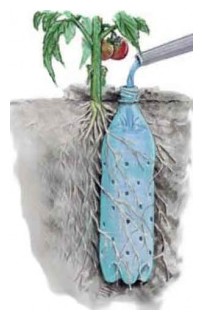
Recently, opaque polyethylene film has been widely used. Soil mulching with an opaque film in combination with drip irrigation saves irrigation water, creates favorable conditions for plant development, clears the field of weeds, eliminates soil compaction, and as a result significantly increases the yield of tomatoes.
Irrigation. In the south of Ukraine, it is desirable to grow tomatoes only under irrigation. Drip irrigation is the most progressive way of watering. With this method of watering, the most uniform distribution of moisture for plants is achieved. Along with watering, it is possible to feed plants with mineral fertilizers with precise dose control. The drip irrigation system is installed before sowing or planting seedlings. The drip tube is laid together with sowing with a converted seeder, or immediately after sowing by hand. This allows you to start watering immediately after sowing and get guaranteed seedlings.
The provision of moisture in tomatoes in different phases of development and with different growing methods (seedling and seedless) is not the same. With seedless cultivation for the normal development of the root system of the vegetative mass, the optimal range of humidity in the period of seedlings-beginning of fruit formation is 70 - 100% HB. During the period of mass fruit formation, soil moisture should not fall below 80 - 85% HB. In the last period before irrigation, the humidity should not be less than 70% HB.
For seedling tomatoes, after planting, soil moisture should be at least 80% HB. After the seedlings have taken root, the soil moisture regime is maintained similarly to the variant of the seedless growing method.
During the growing season, the required amount of soil moisture also changes, that is, the width and depth of the moistened zone. The width of the wetting strip is determined by the width of the sowing and in the initial period of vegetation should be at least 40 cm. With this width, the wetting depth on loamy soils is 20-25 cm. moisture should be at least 60 cm at a depth of 40 cm. The area of moisture in the first case is 2022%, in the second it increases to 35% of the total field area.
Depending on the value of pre-irrigation soil moisture, the width and depth of the wetting strip, the value of the irrigation rate changes. On loamy soils, during the period of survival of tomato seedlings - the beginning of fruit formation, with the location of the irrigation pipeline with water outlets every 30 cm and the pre-irrigation soil moisture of at least 70% HB, the irrigation rate is 5060 m / ha. The duration of irrigation with such a value of irrigation rate is approximately three hours. At the beginning of fruit formation and during the fruiting period with pre-irrigation soil moisture of 80-85% HB, a strip width of 60 cm and a depth of 40 cm with a single-line seeding scheme, the irrigation rate is 70-90 m / ha, respectively.
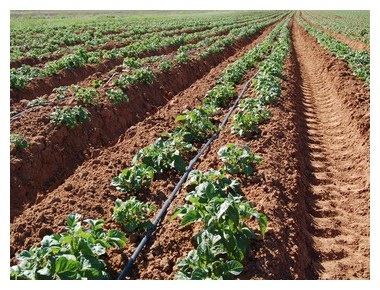
For watering with such a norm, it takes from 3.5 to 5 hours.
During the period of intensive water consumption, the inter-irrigation period is no more than 3-4 days. With an increase in yield, in order to maintain optimal soil moisture, it is necessary to irrigate much less frequently, at a rate of 110130 m3/ha.
Fertilizer. The calculation of the required amount of fertilizers is carried out according to the analysis of the available basic nutrients in the soil. To obtain 10 tons of tomato fruits, plants use 33.0 kg of nitrogen, 13.0 kg of phosphorus and 45.5 kg of potassium.
Organic fertilizers are not applied directly under the tomatoes. It is better to apply them under the predecessor, normally 30-40 t/ha. However, on poor soils, it is advisable to apply organic fertilizers under the fallow land in the form of rotted manure. At the beginning of the growing season, tomatoes provide, first of all, phosphorus and potassium. At the same time, 3A volumes of phosphorus and / 4 potash fertilizers are used as the main fertilizer application. Then they are strengthened with nitrogen, and before fruiting - with potassium.
It is more expedient to apply mineral fertilizers at one time - for autumn plowing. They can also be applied for cultivation in the spring in three stages: for early cultivation, when sowing in rows and top dressing.
On the chernozem soils of the south of Ukraine, K120P120K90 is applied to obtain a high yield (without manure). If these fertilizers were not applied for autumn plowing or spring cultivation, then it is necessary to apply the calculated amounts during the growing season by fertigation. The first time they are fed 10-15 days after sowing (planting seedlings), the second - at the beginning of fruit formation in doses of K20P20K15.
The use of drip irrigation requires careful calculation of the introduction of easily soluble forms of mineral fertilizers. When programming fertigation, they take into account the direction of product use: for fresh consumption or processing. Fertilizers are applied differentially for three periods of plant growth and development:
- From germination or planting of seedlings to the beginning of flowering of the first brush;
- From the beginning of flowering to the beginning of maturation;
- From the beginning of ripening to the end of fruiting.
So, obtaining fruits for fresh consumption requires the introduction of nitrogen with the given periods: 1 - 2 kg / ha daily 2 - 3 and 3 - 2.5 kg / ha daily. According to phosphorus: 1 - 0.7, 2 - 0.8 3 - 0.6; potassium: 1 - 2, 2 - 3 3 - 5. To obtain fruits for processing, nutrients are introduced with periods of growth: nitrogen 1 - 1.5, 2 - 2.5 3 - 3; phosphorus 1 - 0.7, 2 - 0.8 3 - 0.6; potassium 1 - 0.9; 2 - 2.5 3 - 3 kg / ha daily.
With drip irrigation, easily soluble complex fertilizers Crystalon, Kemira, Terraflex are used. In addition to macroelements, the listed fertilizers include the necessary set of microelements (Fe, Zn, B, Mo, Cu, Mn in the form of EDTA and DTPA complexes) and magnesium.
